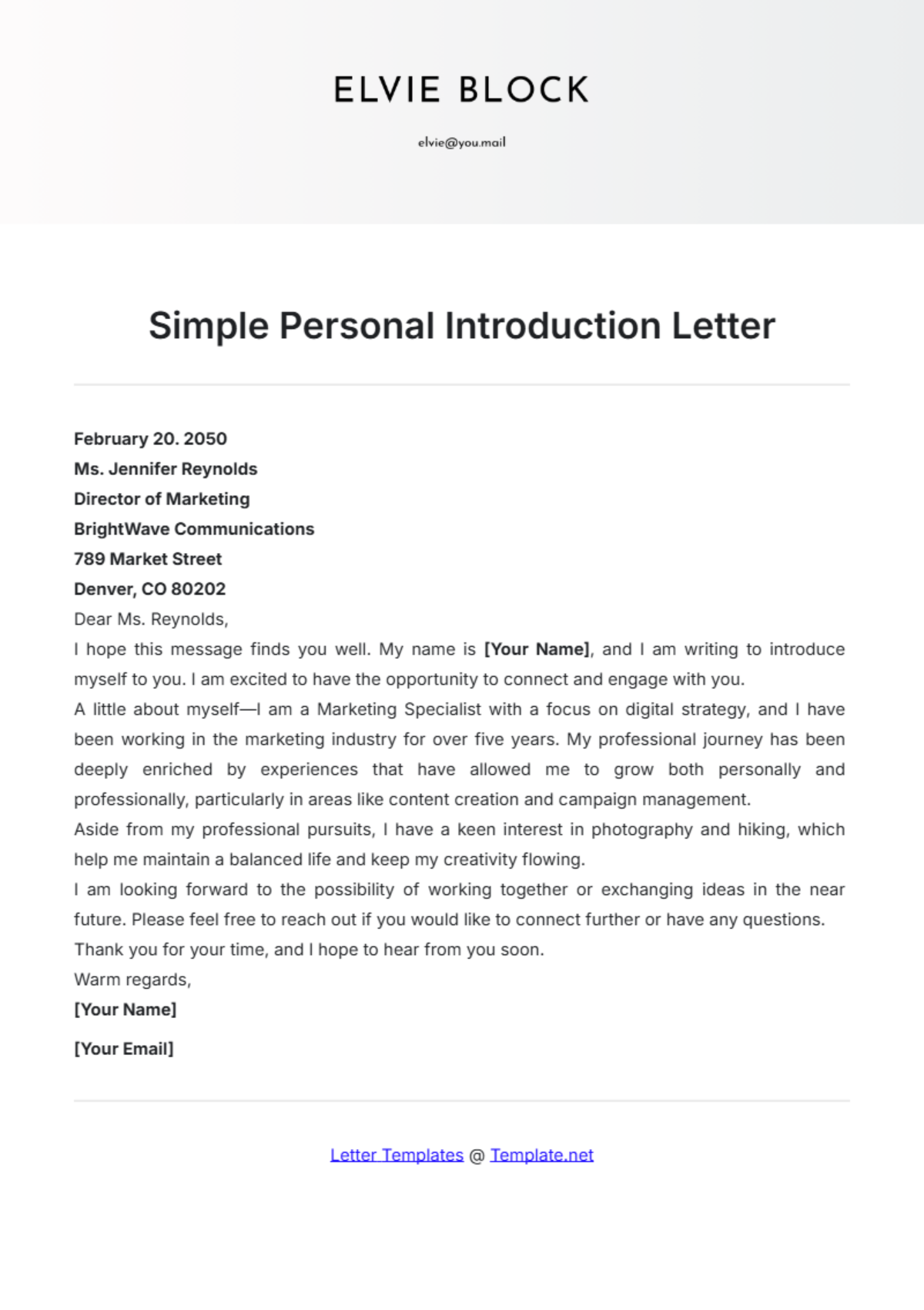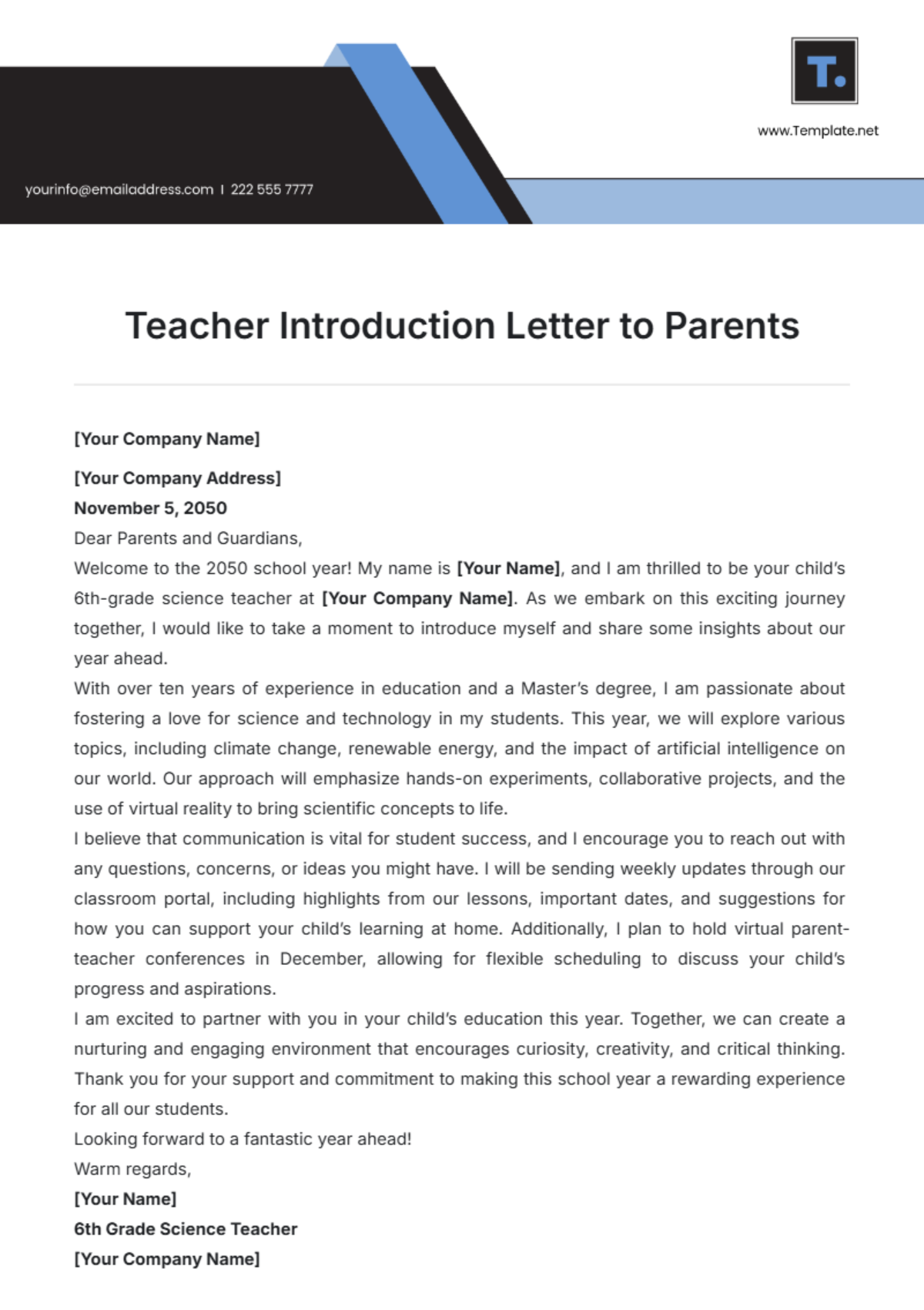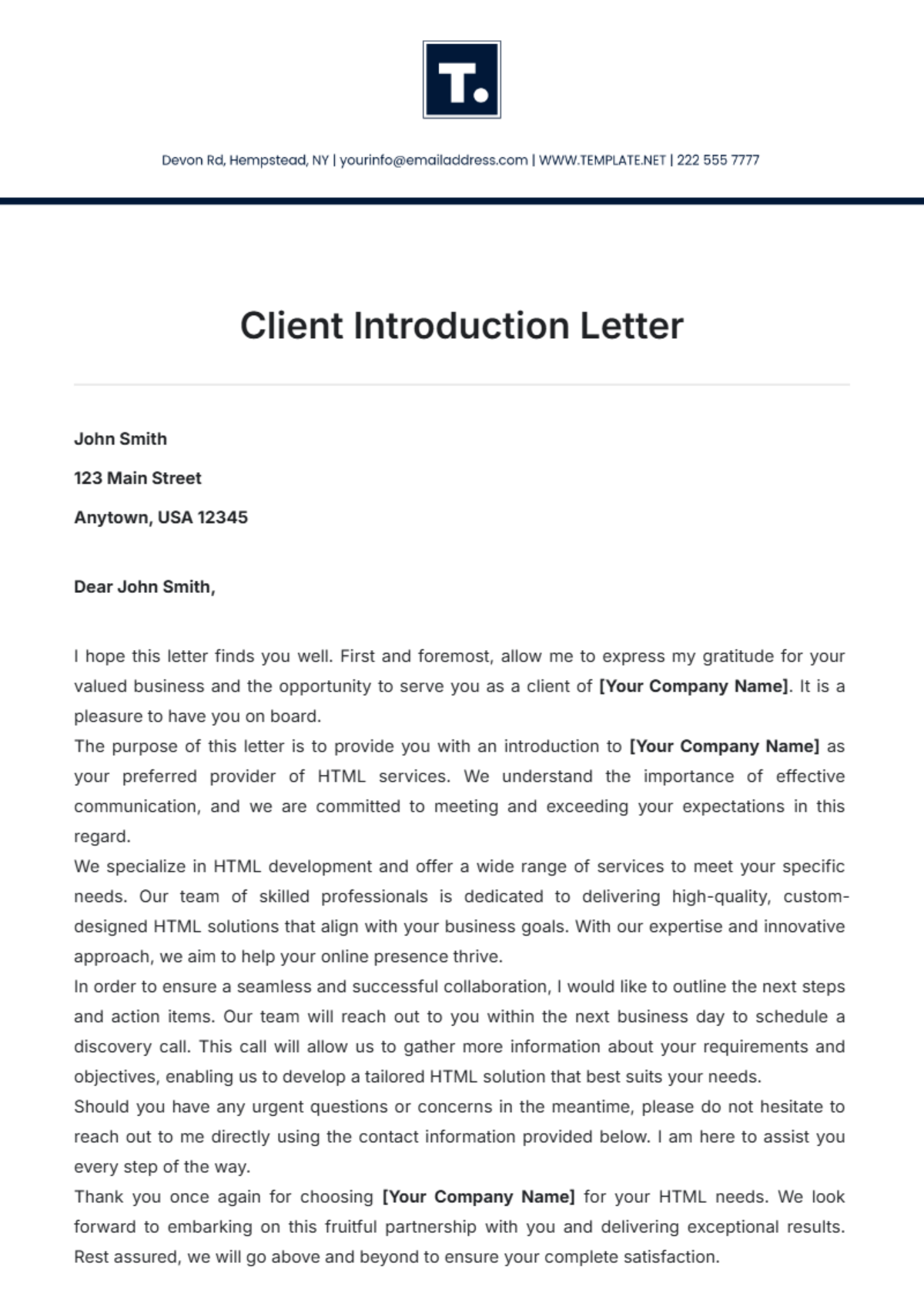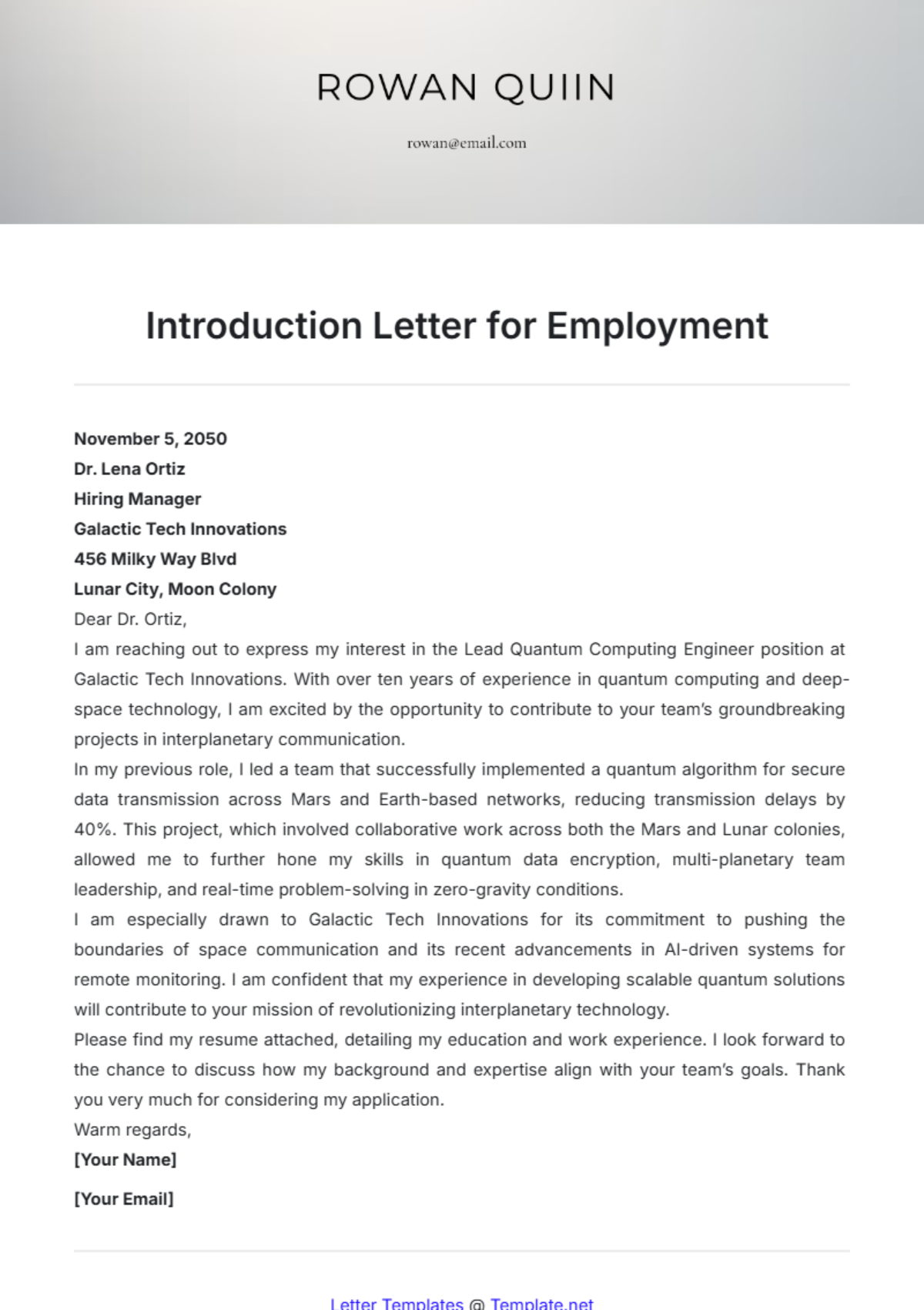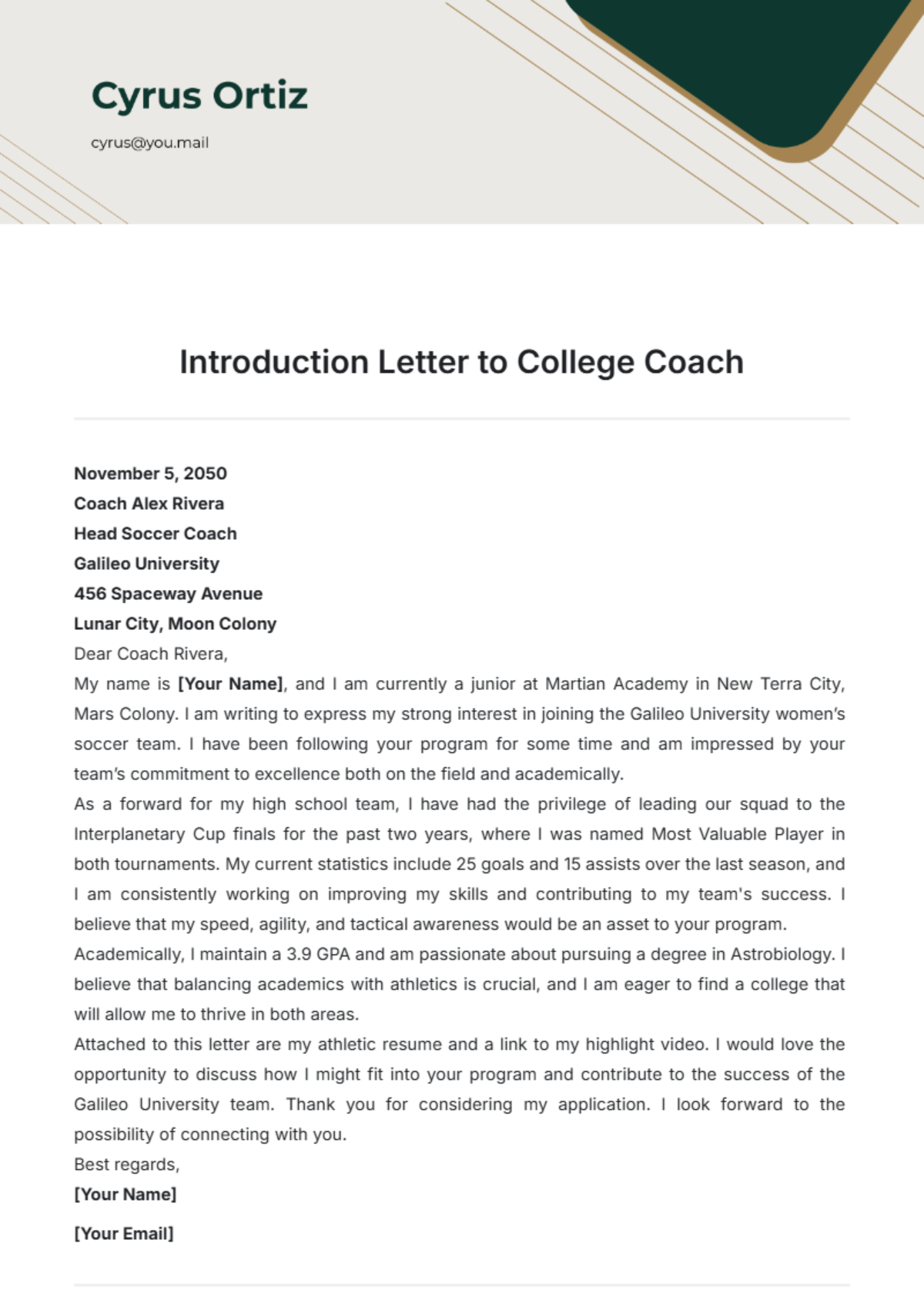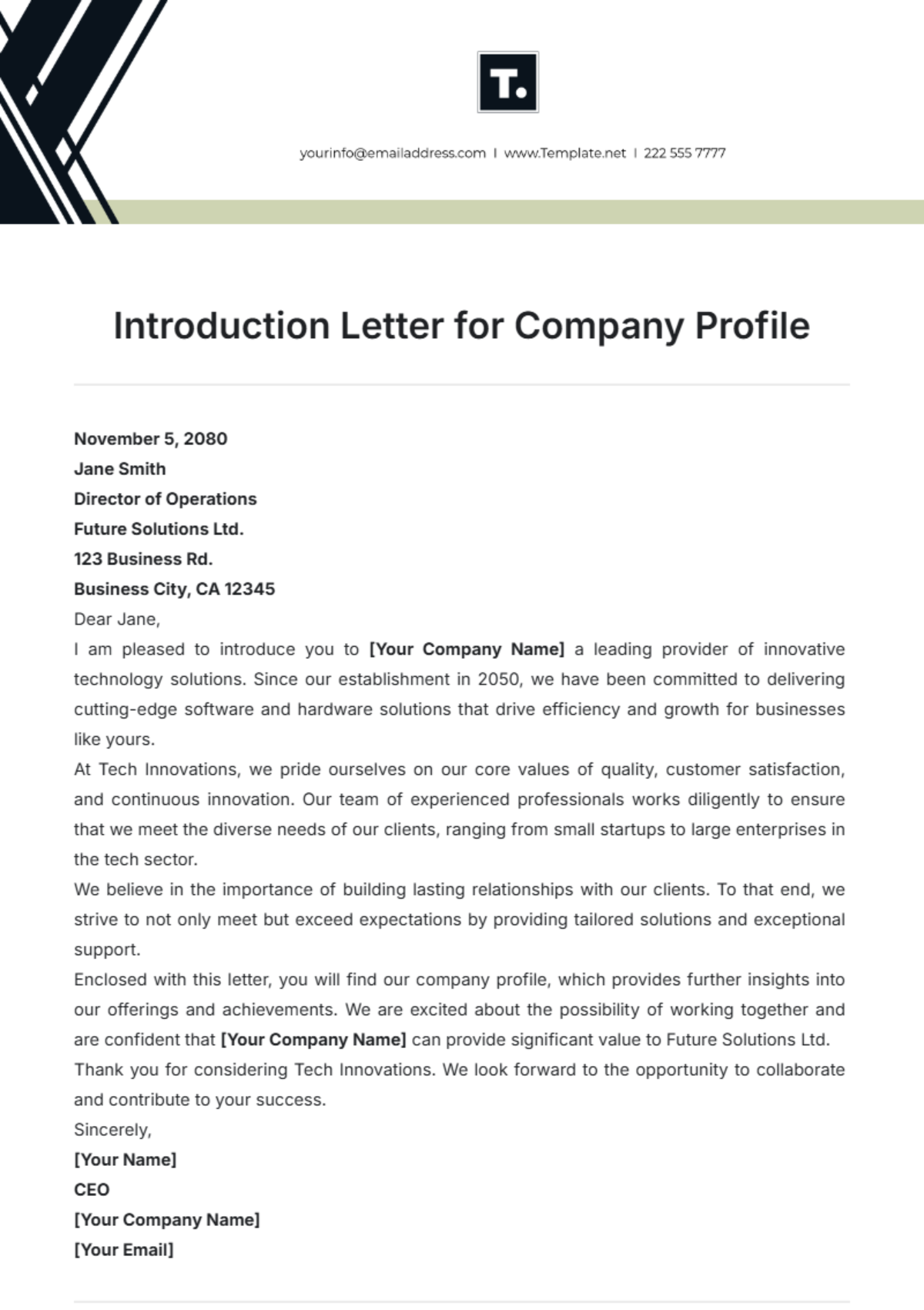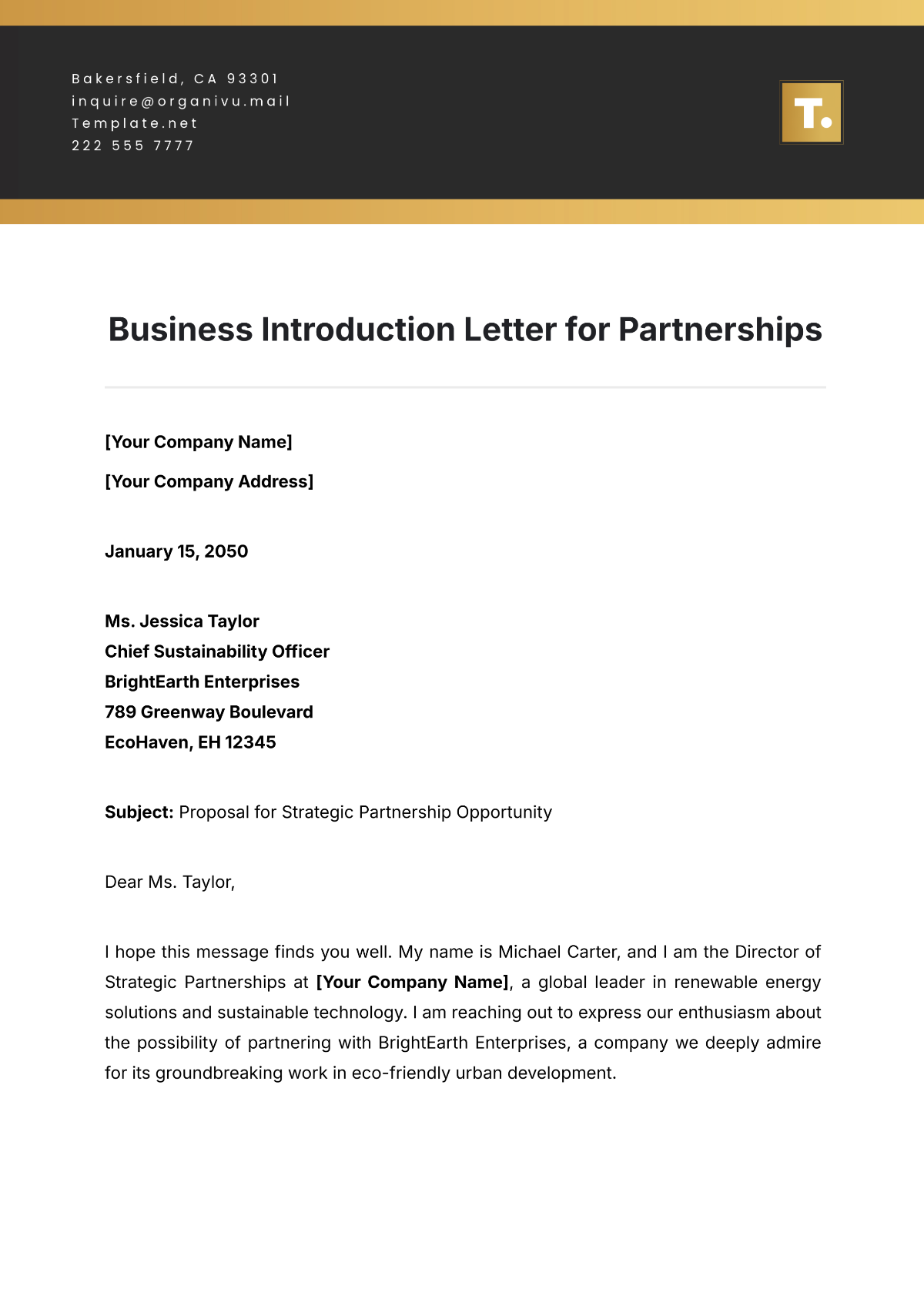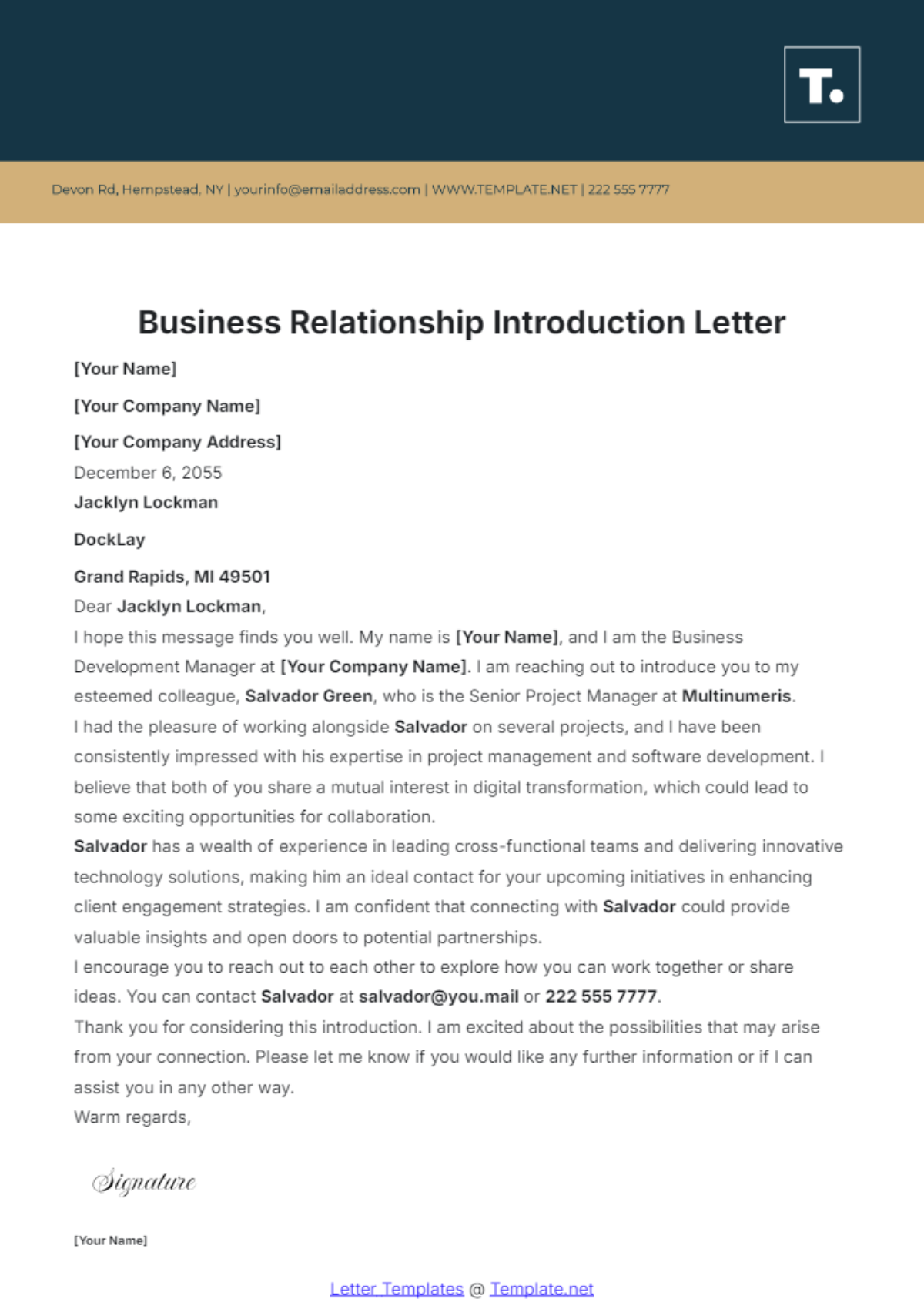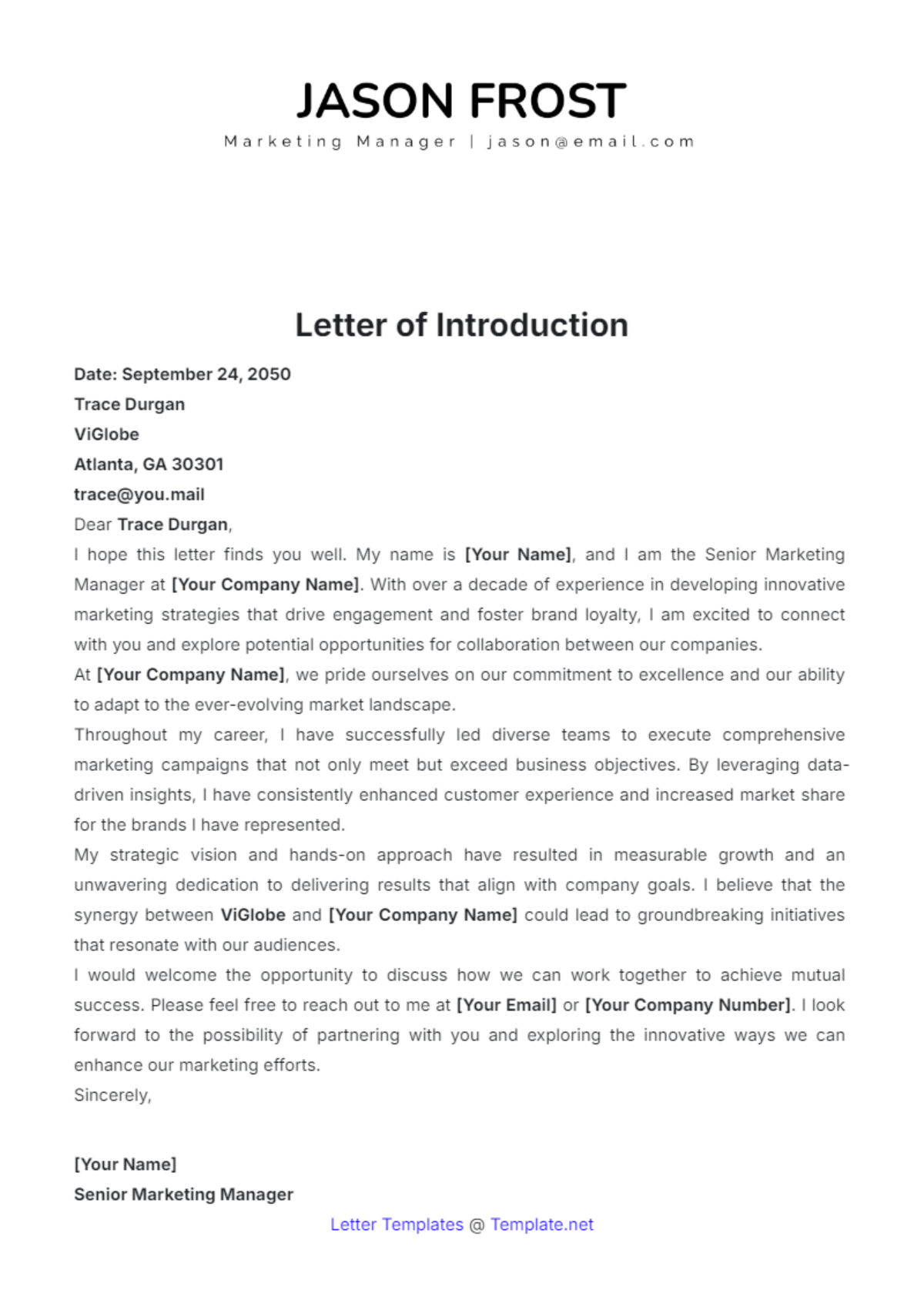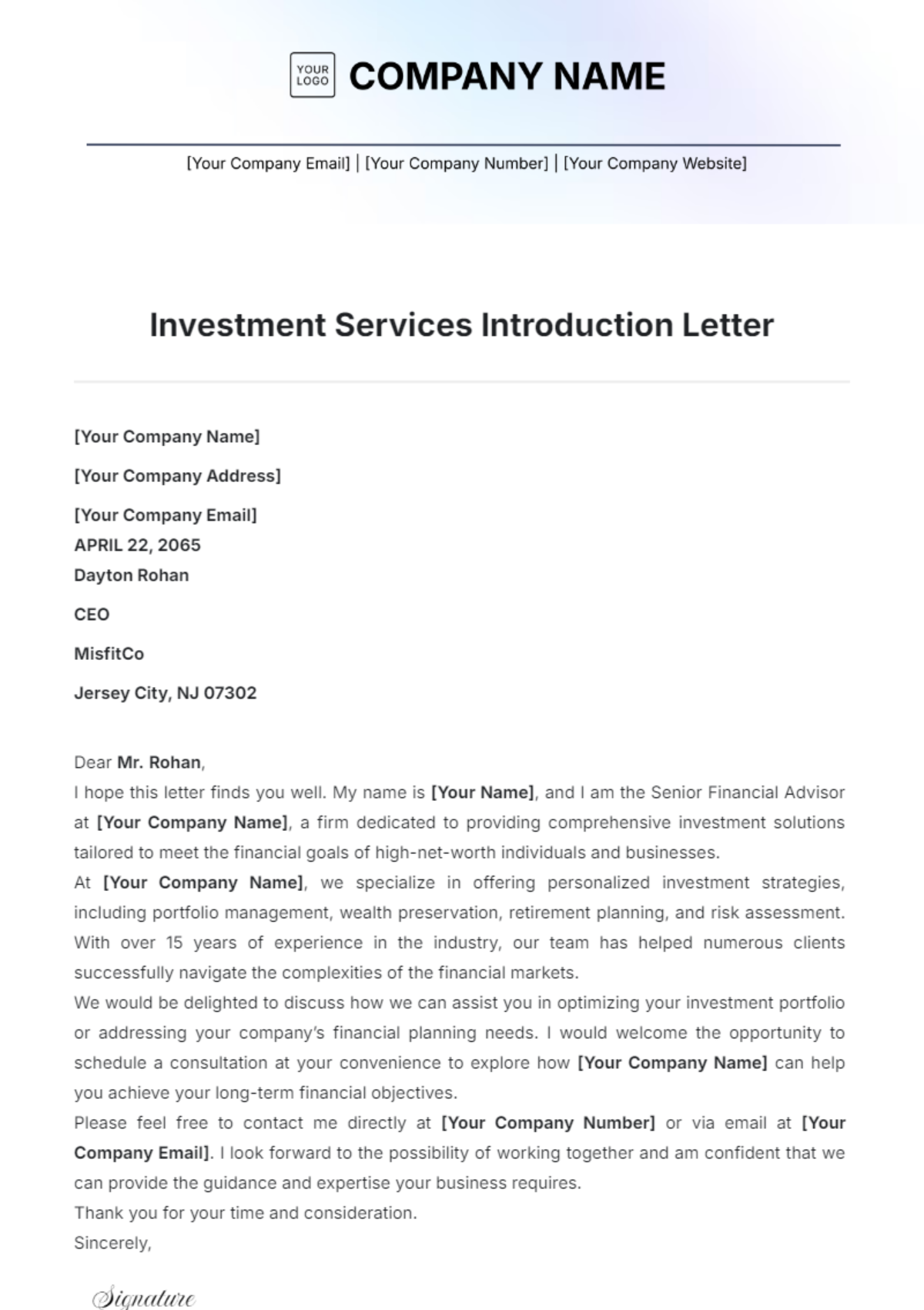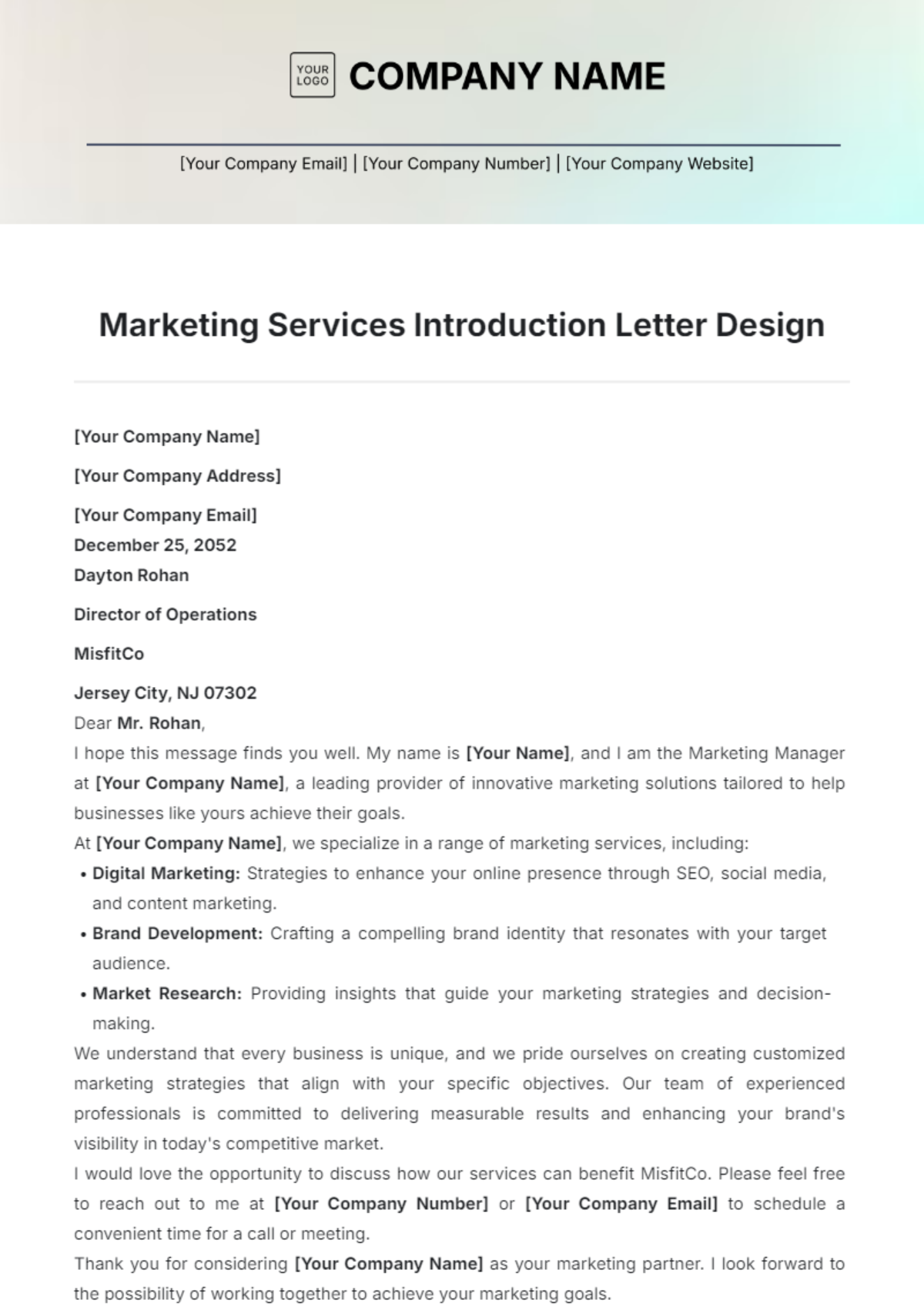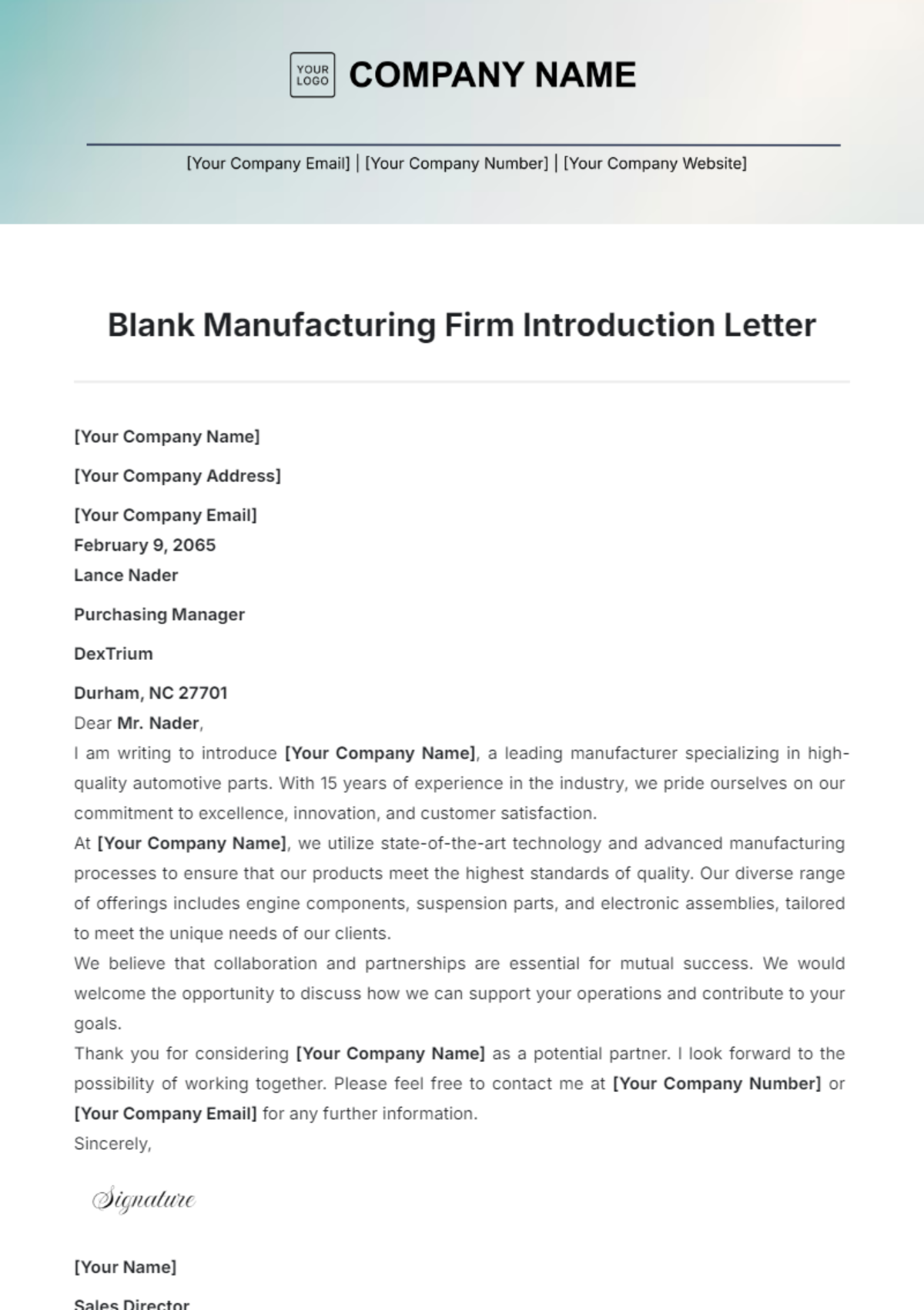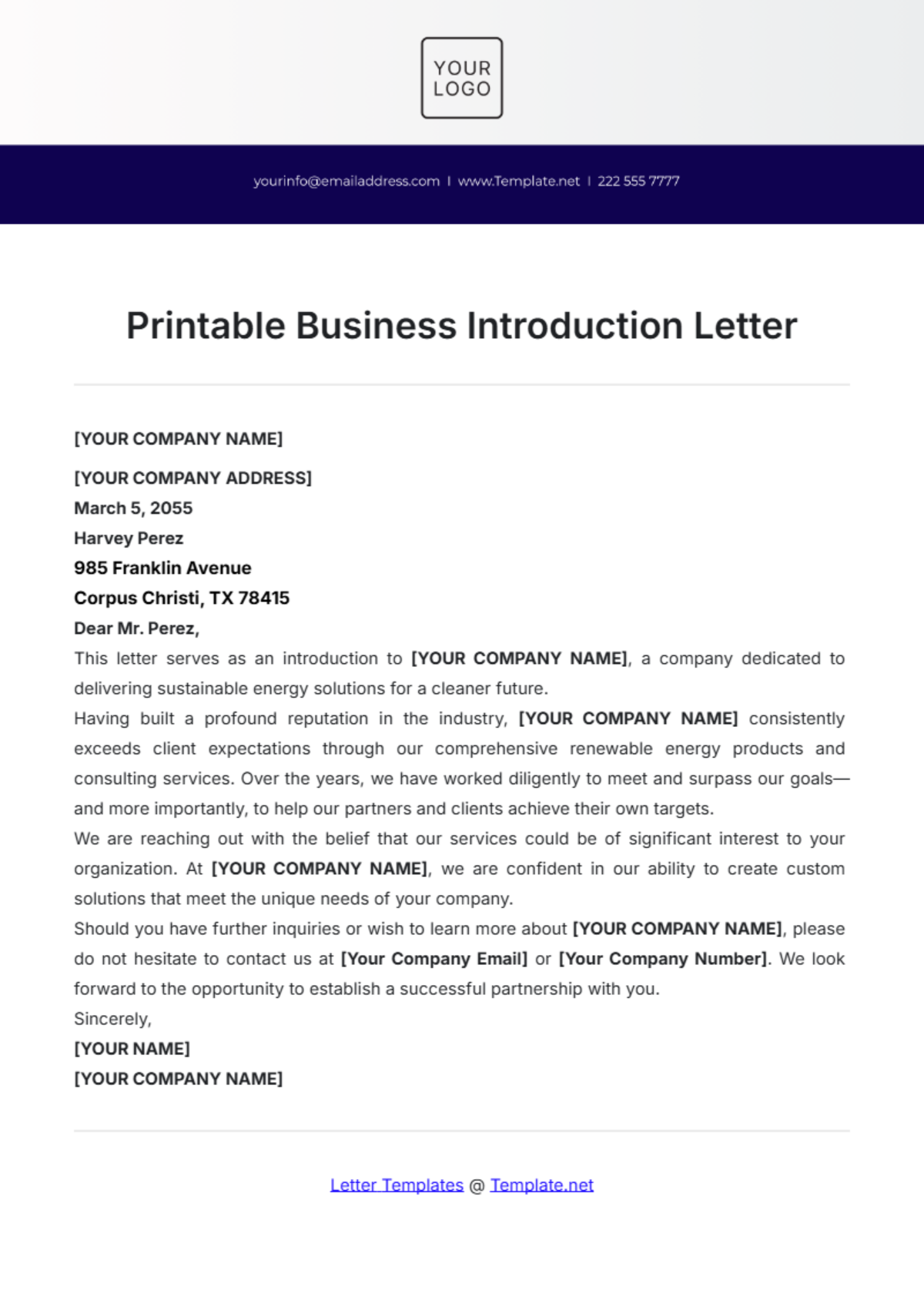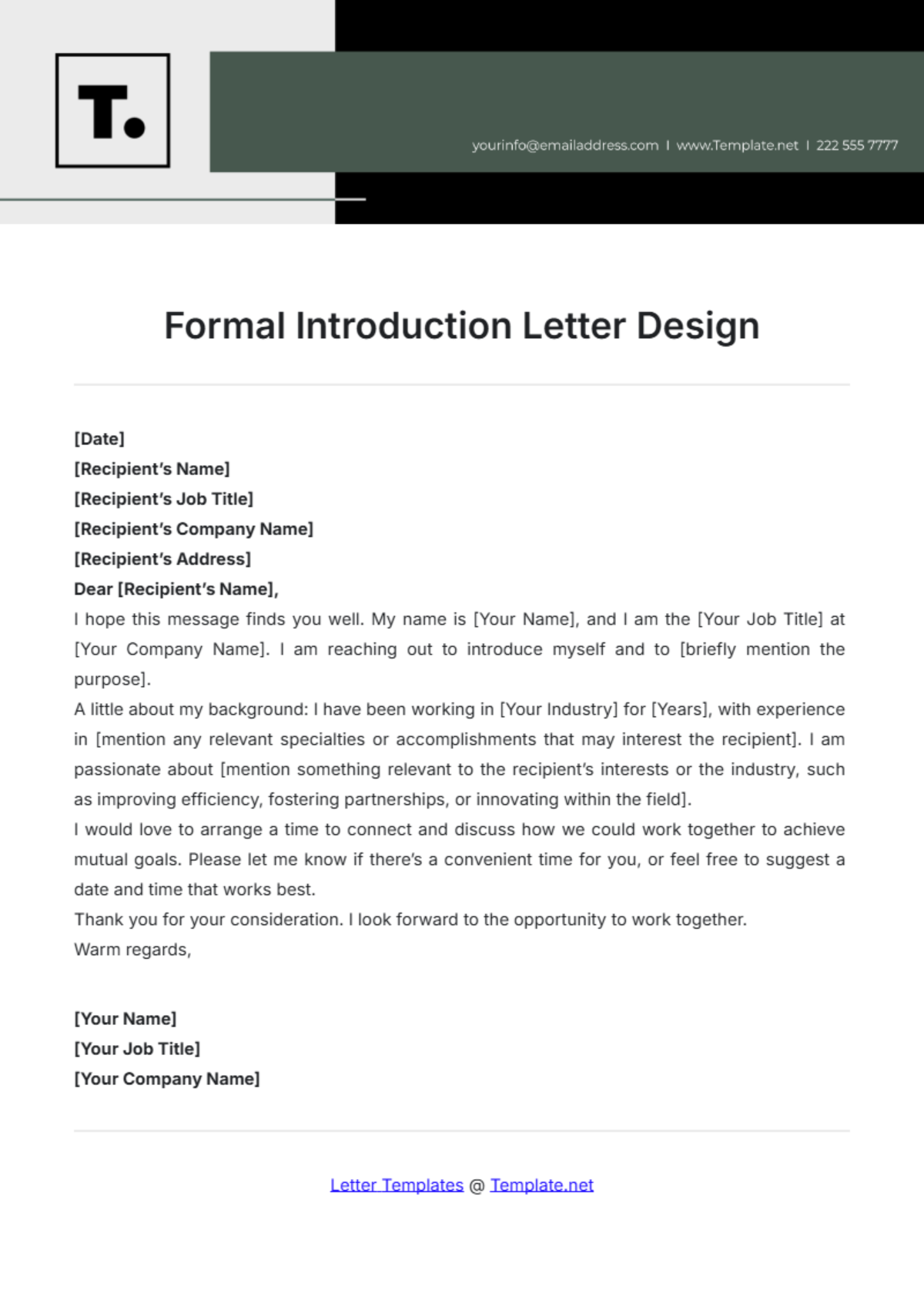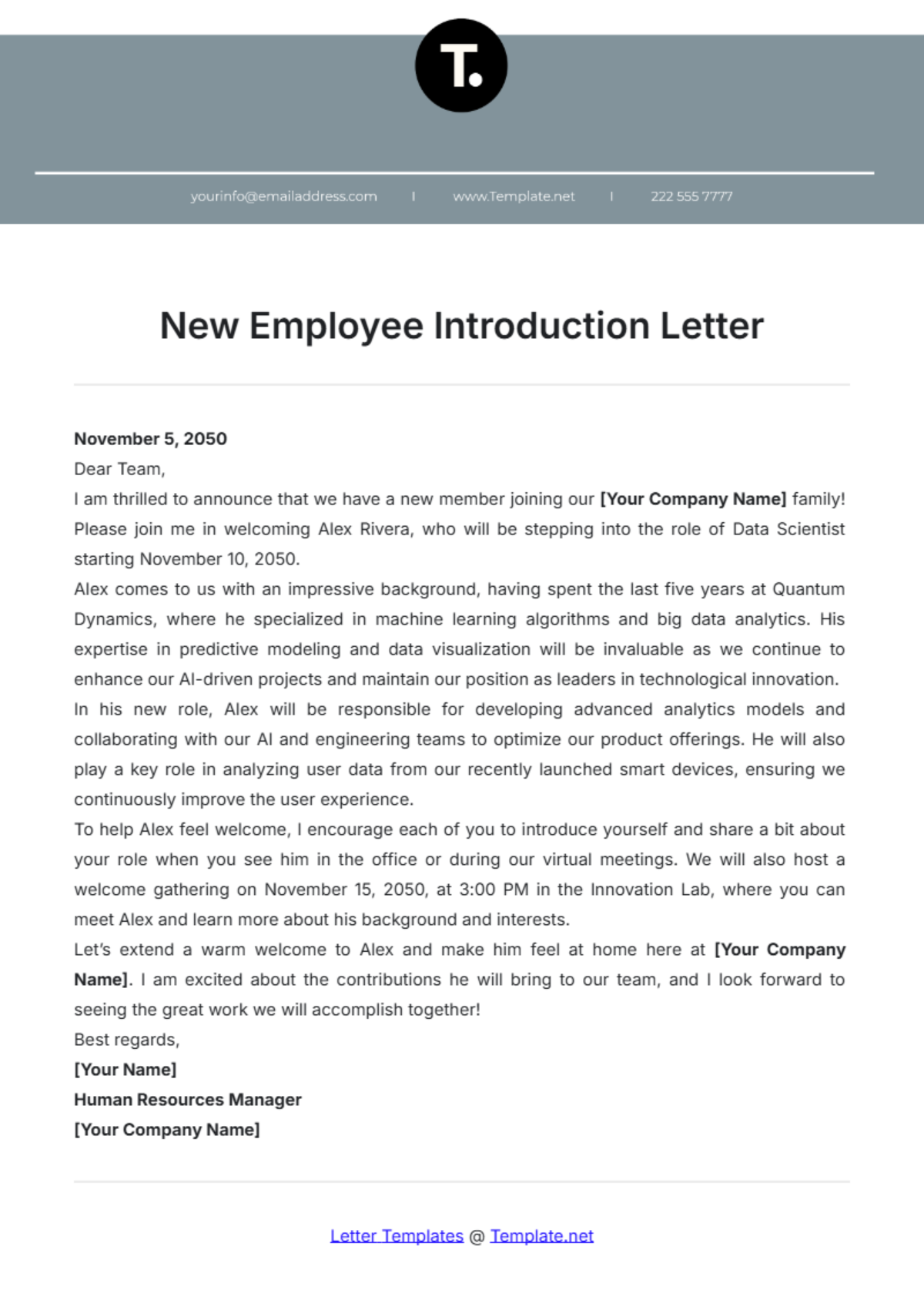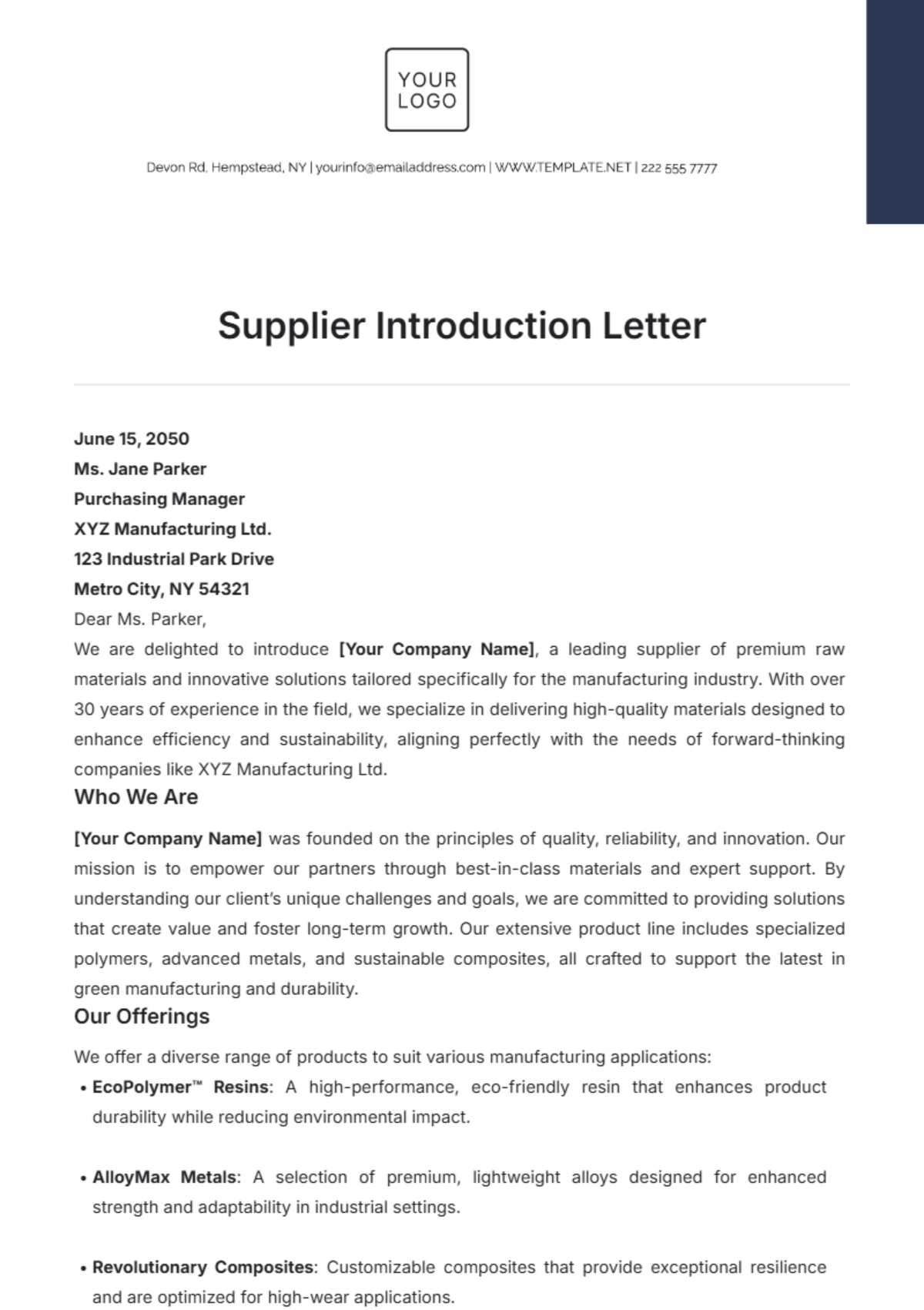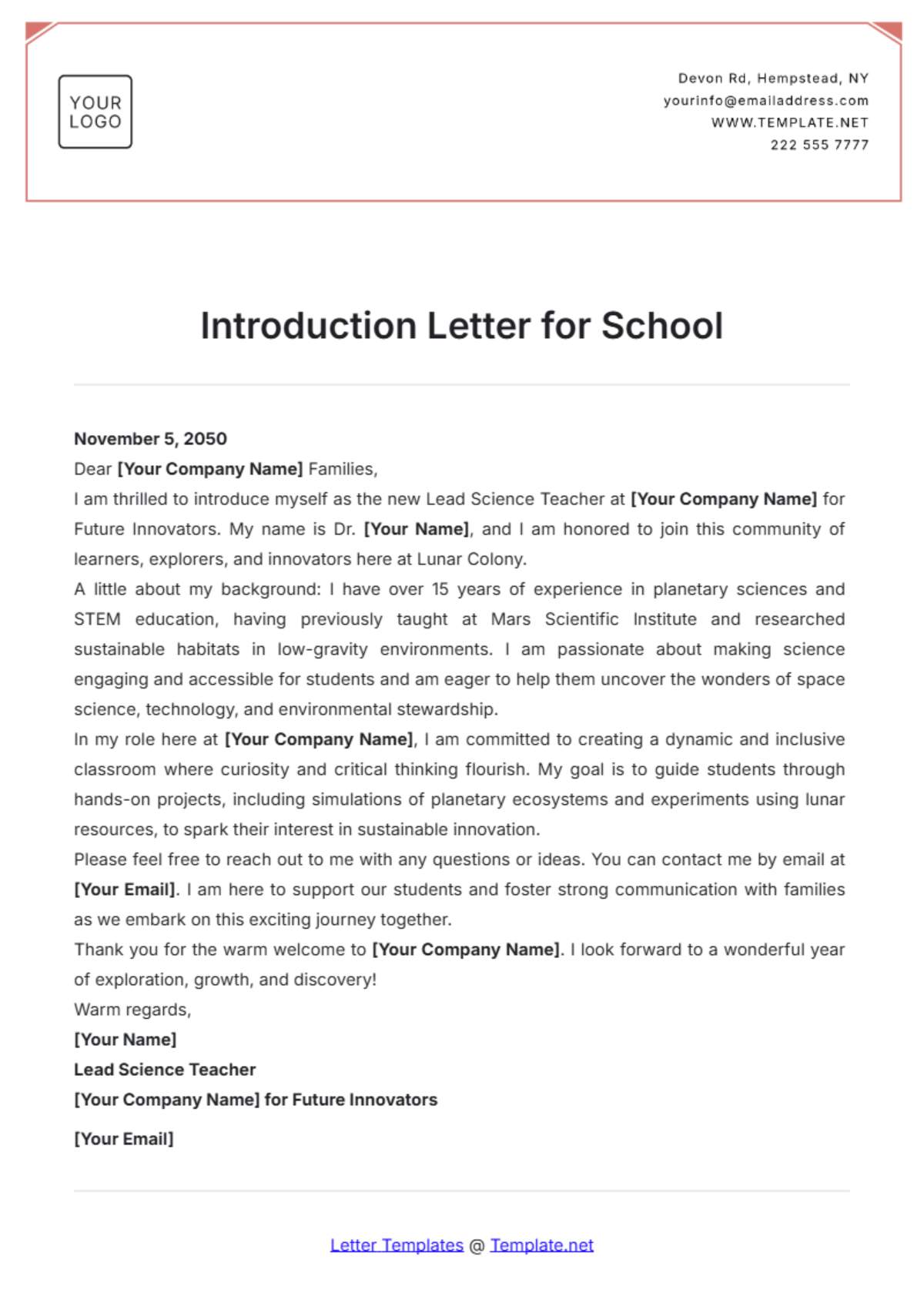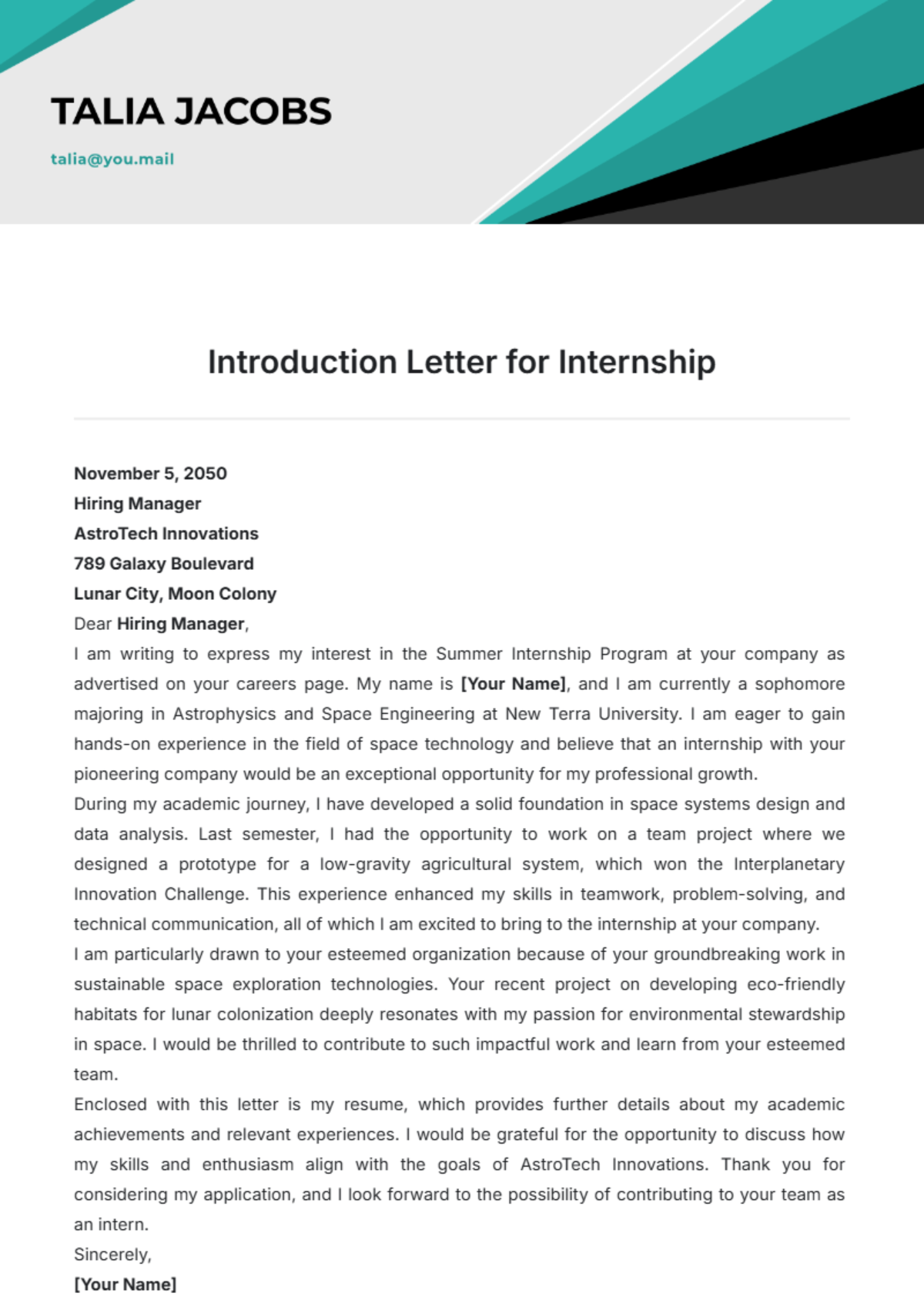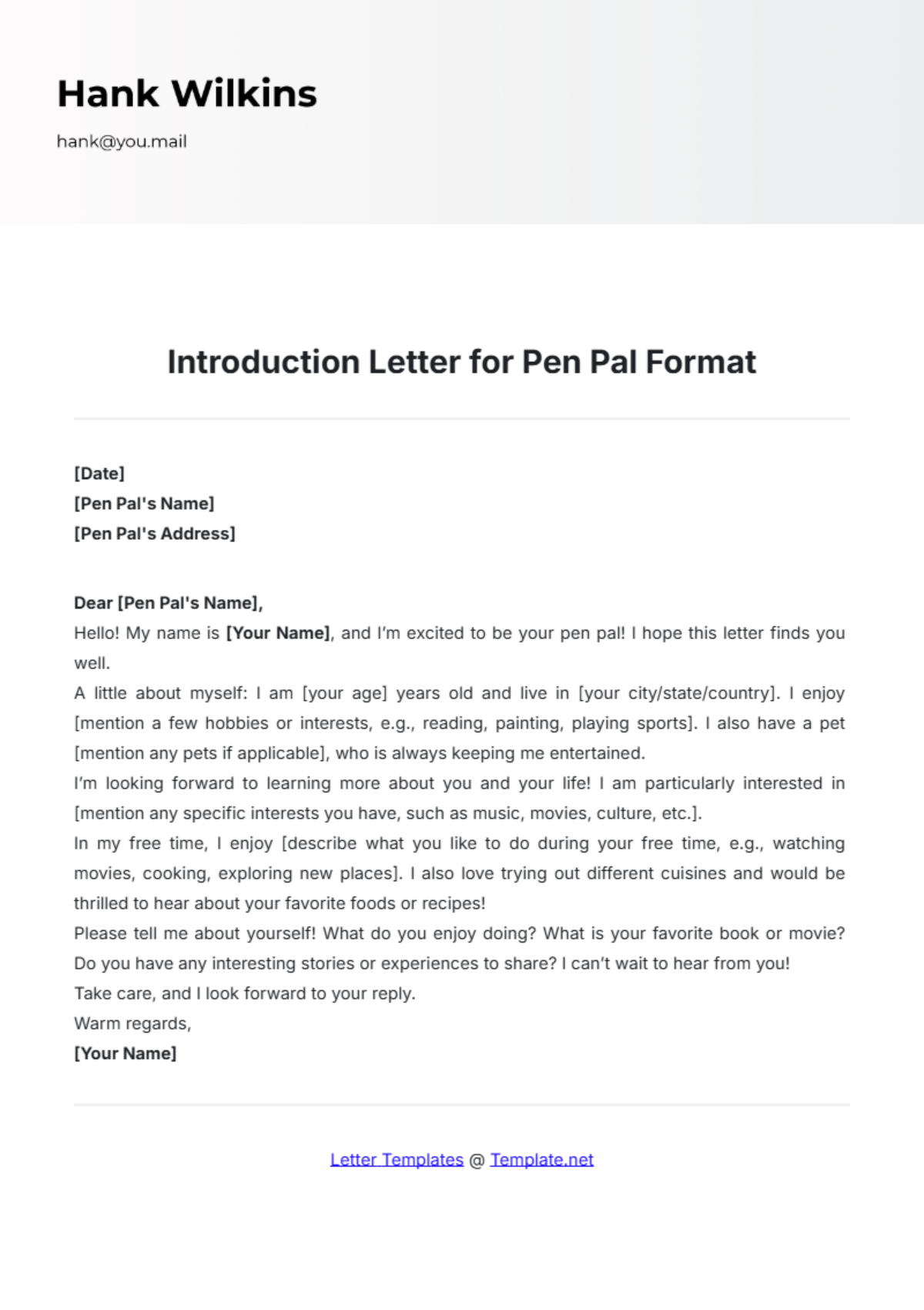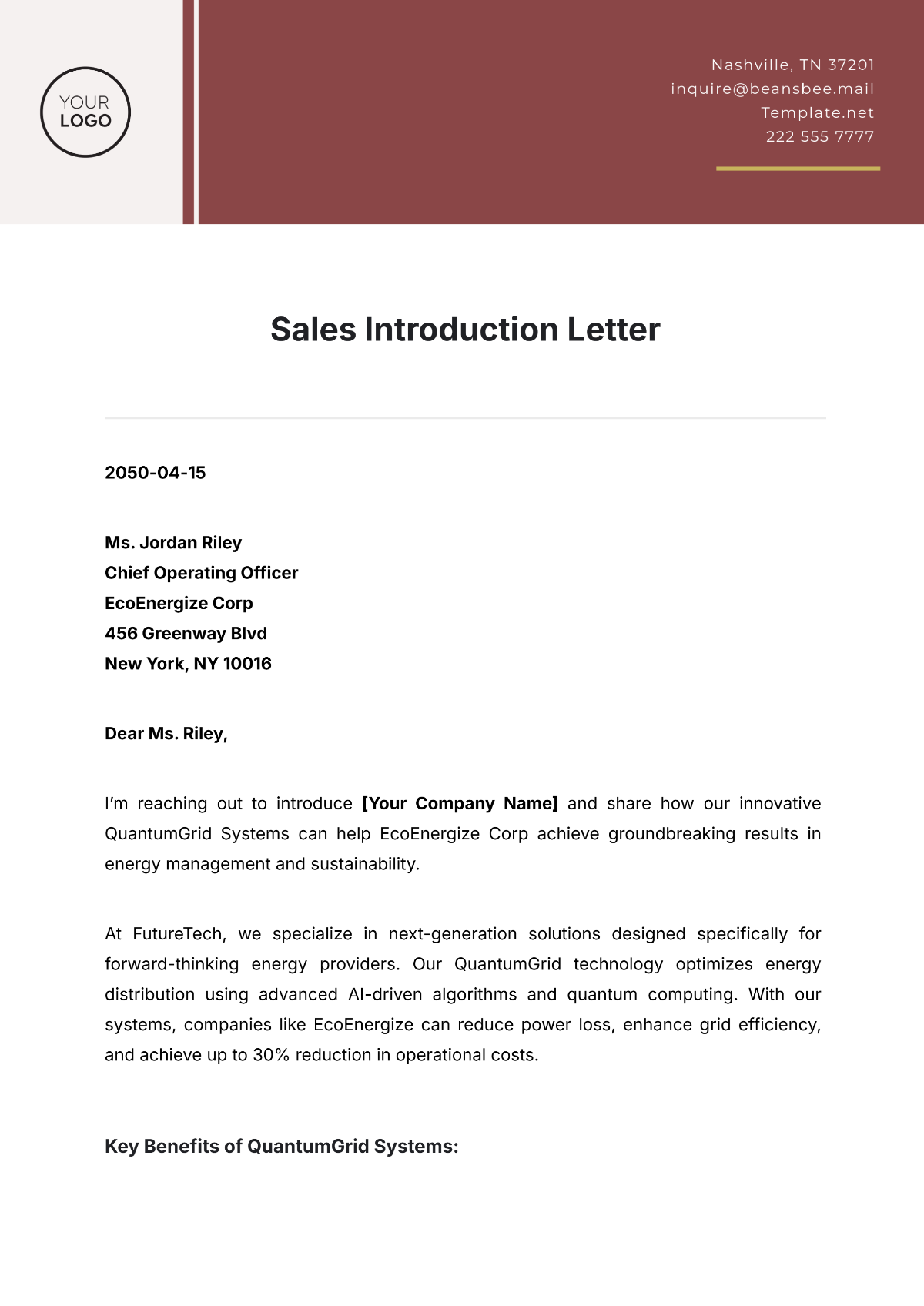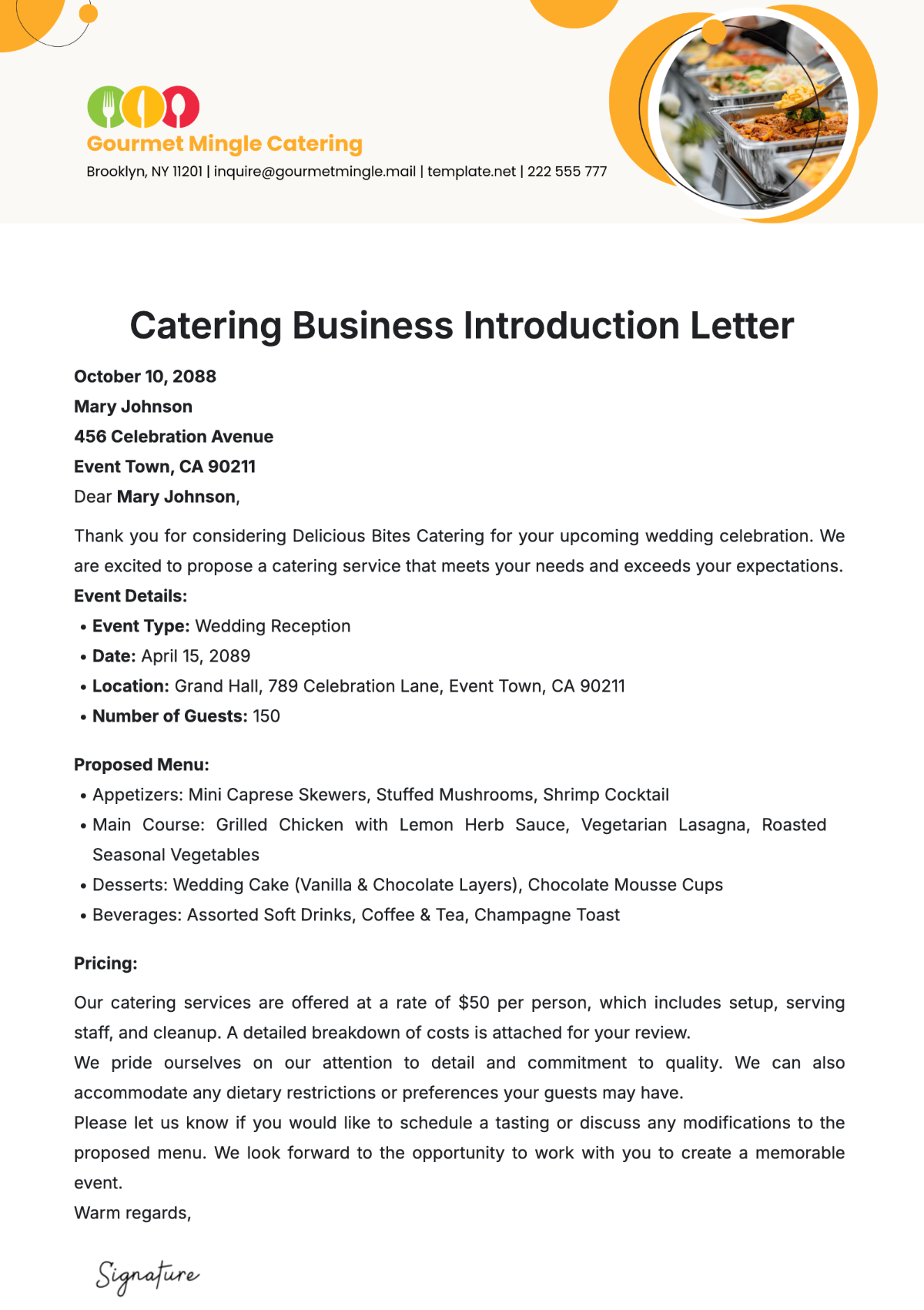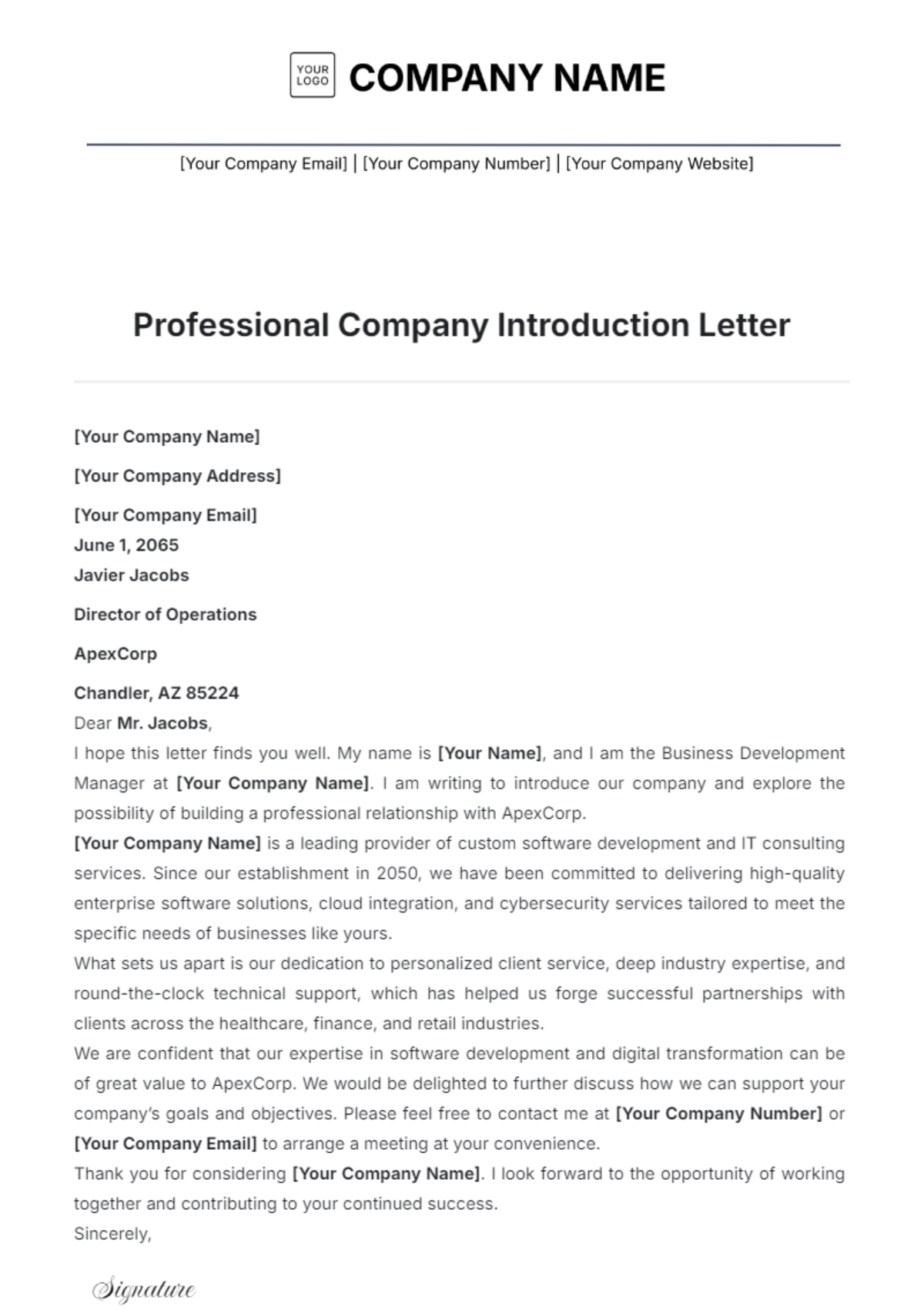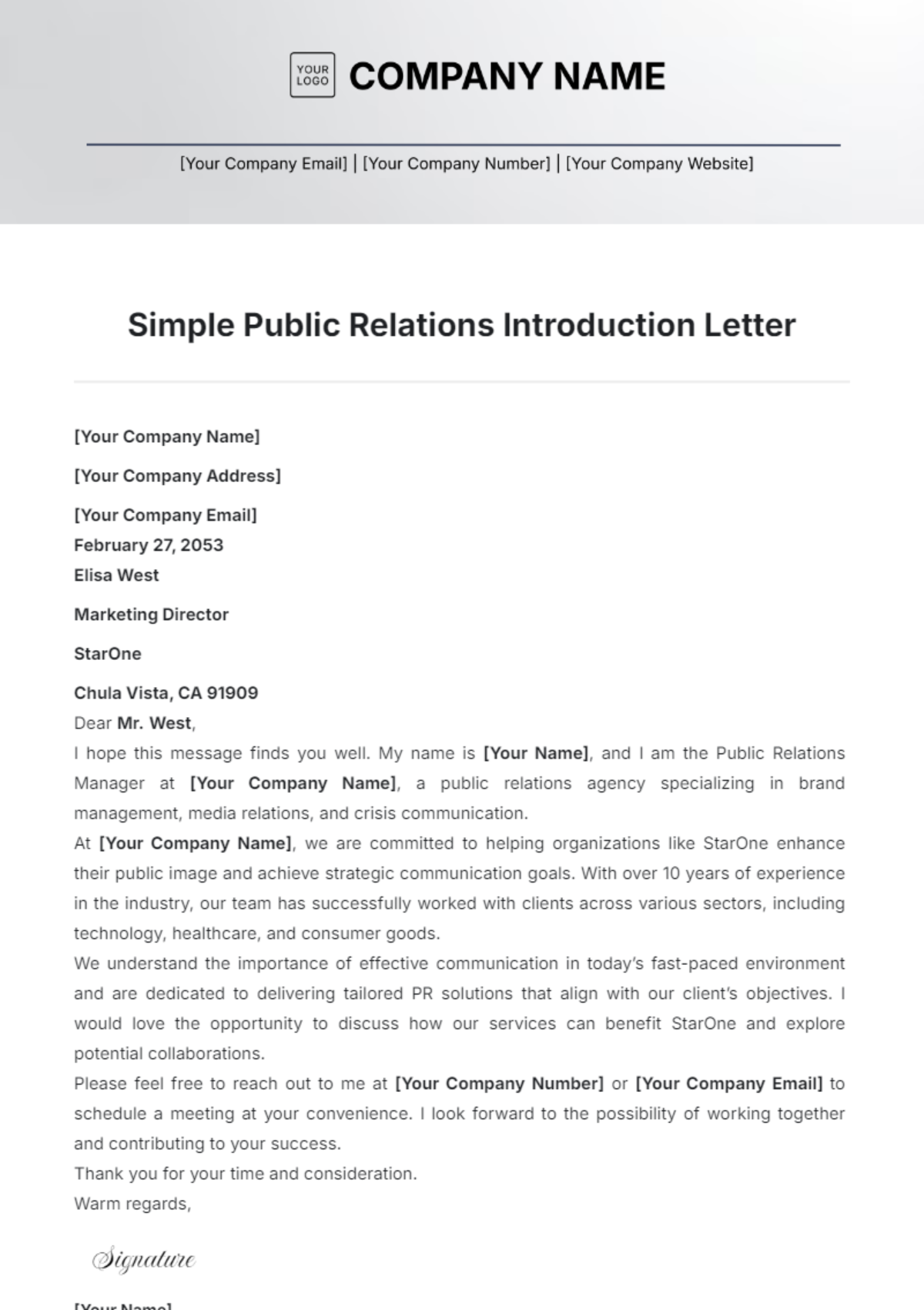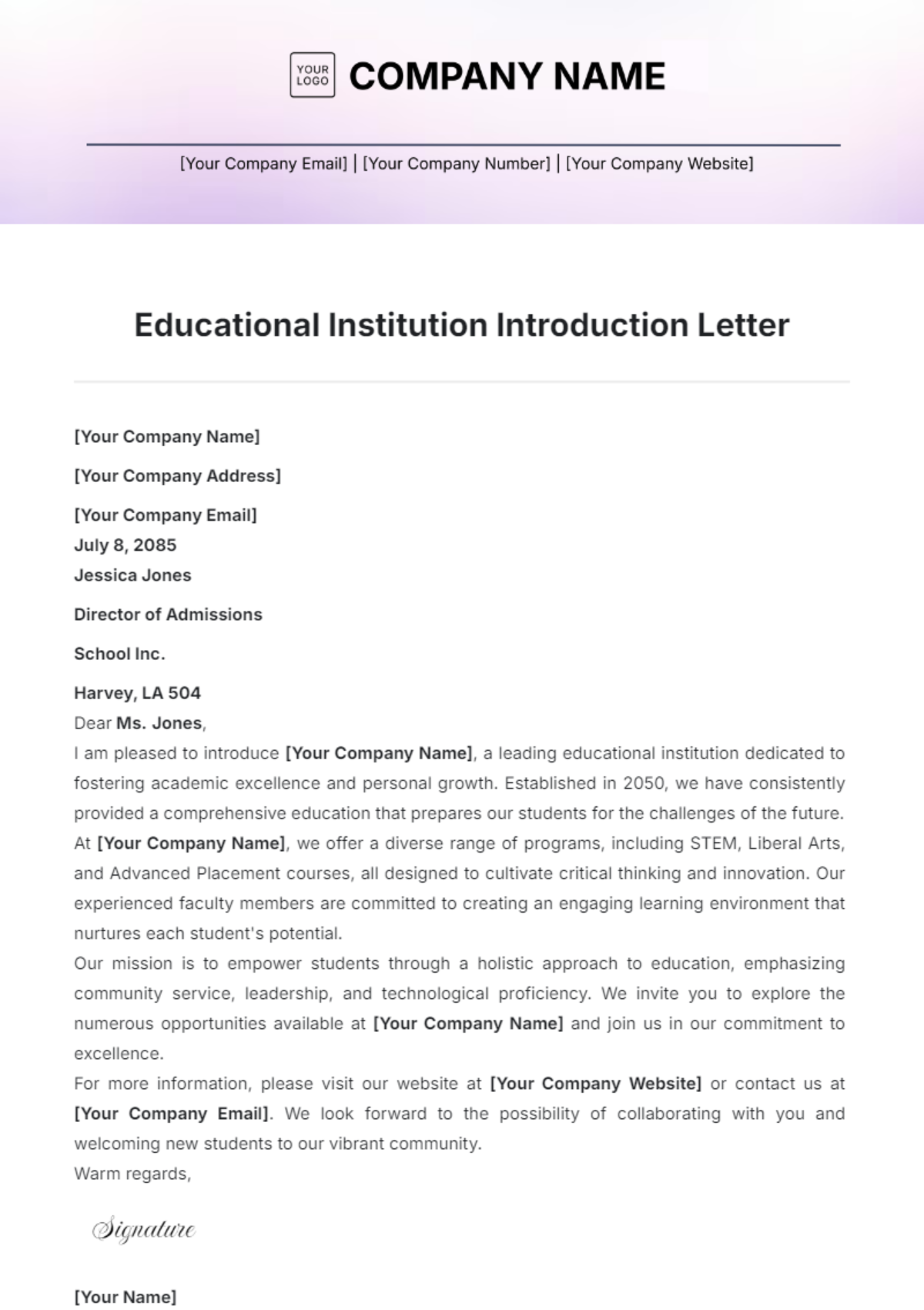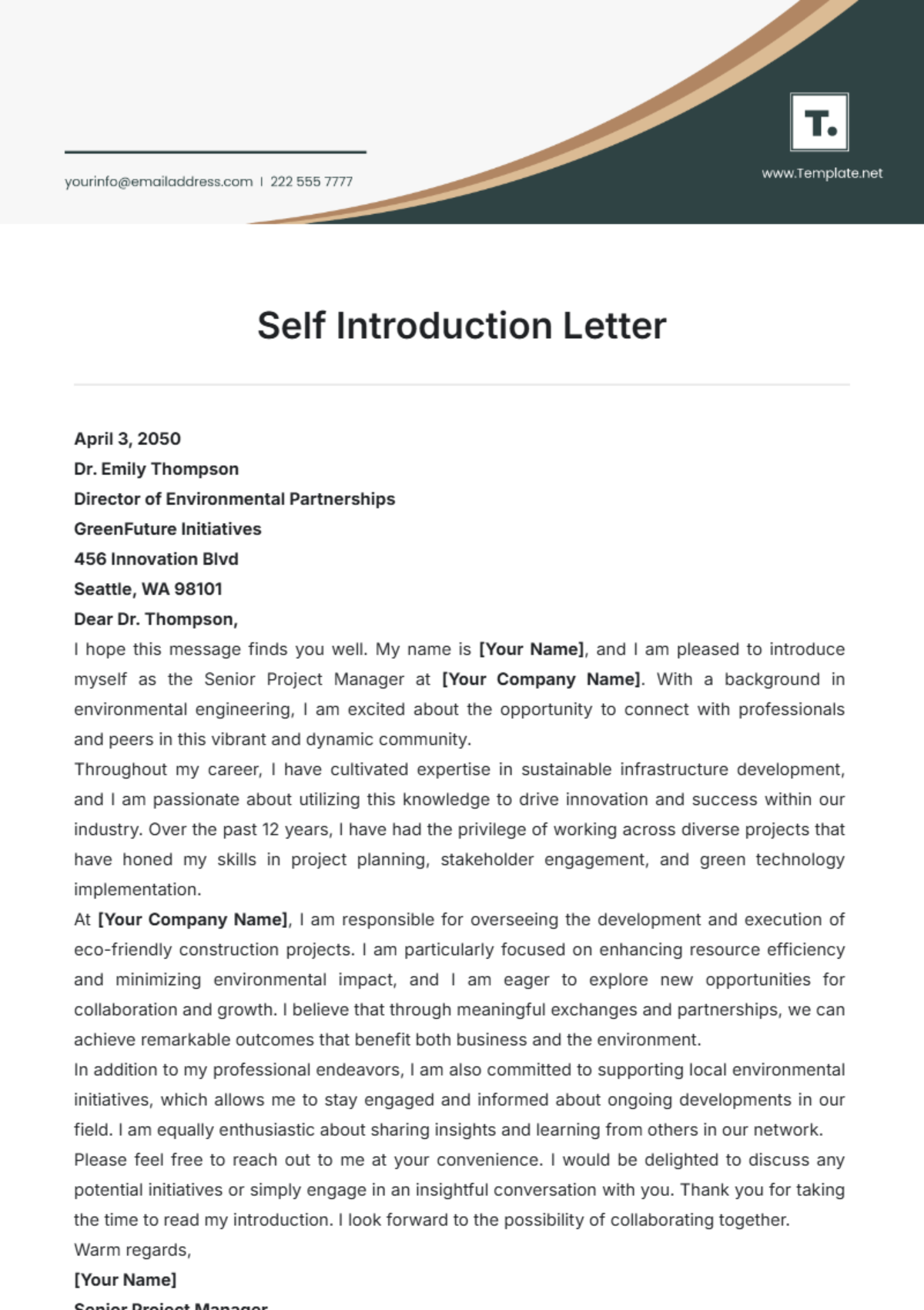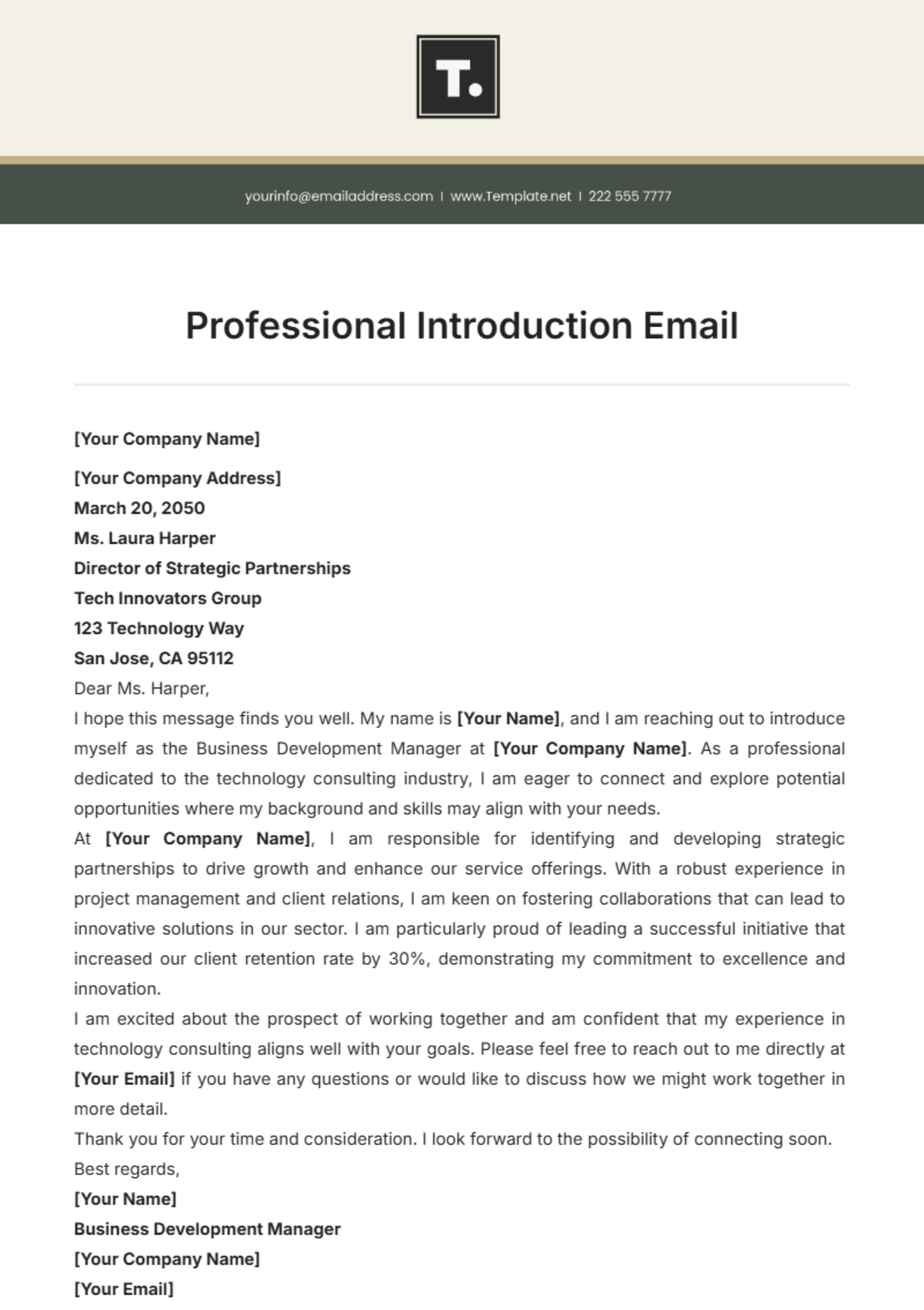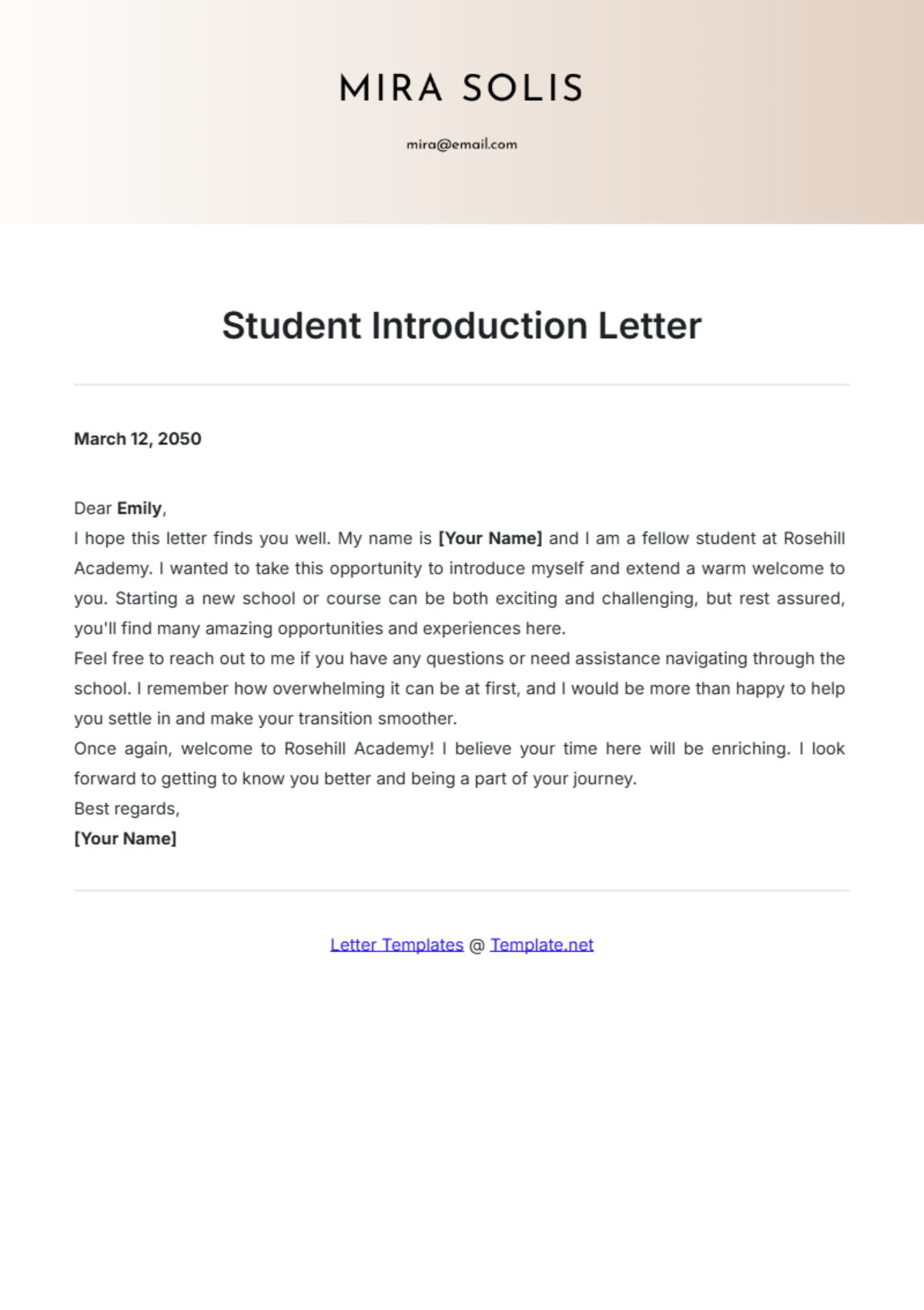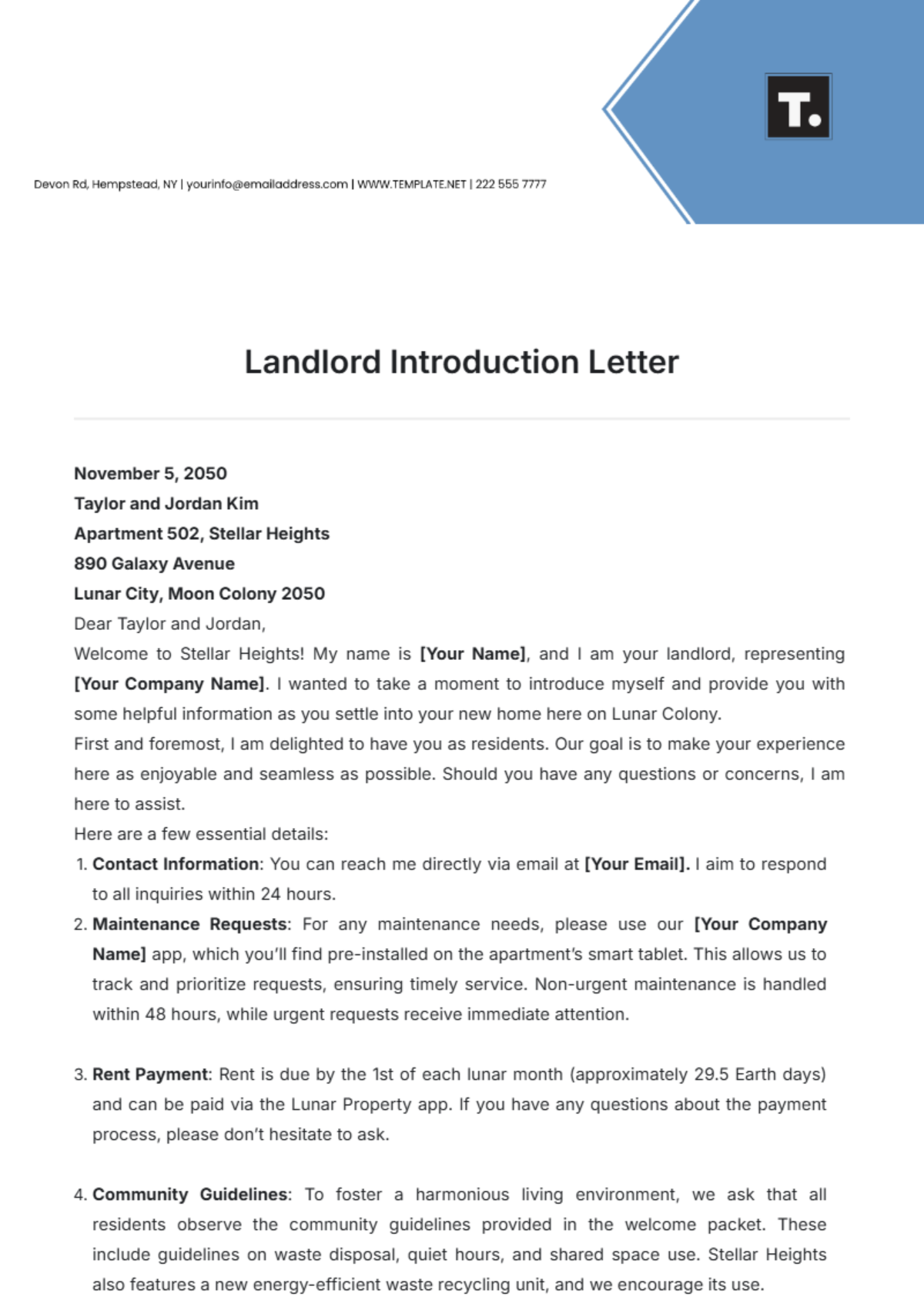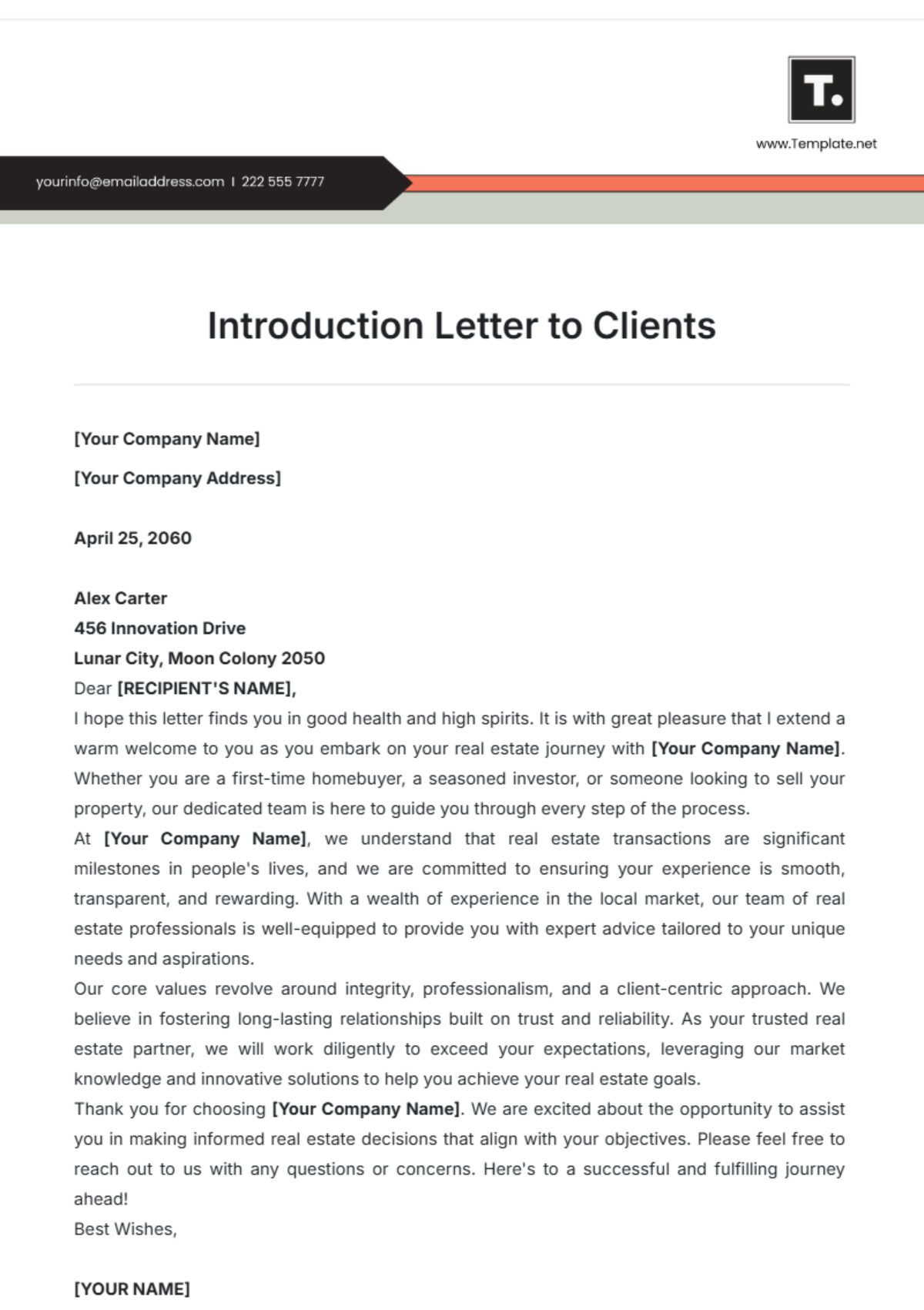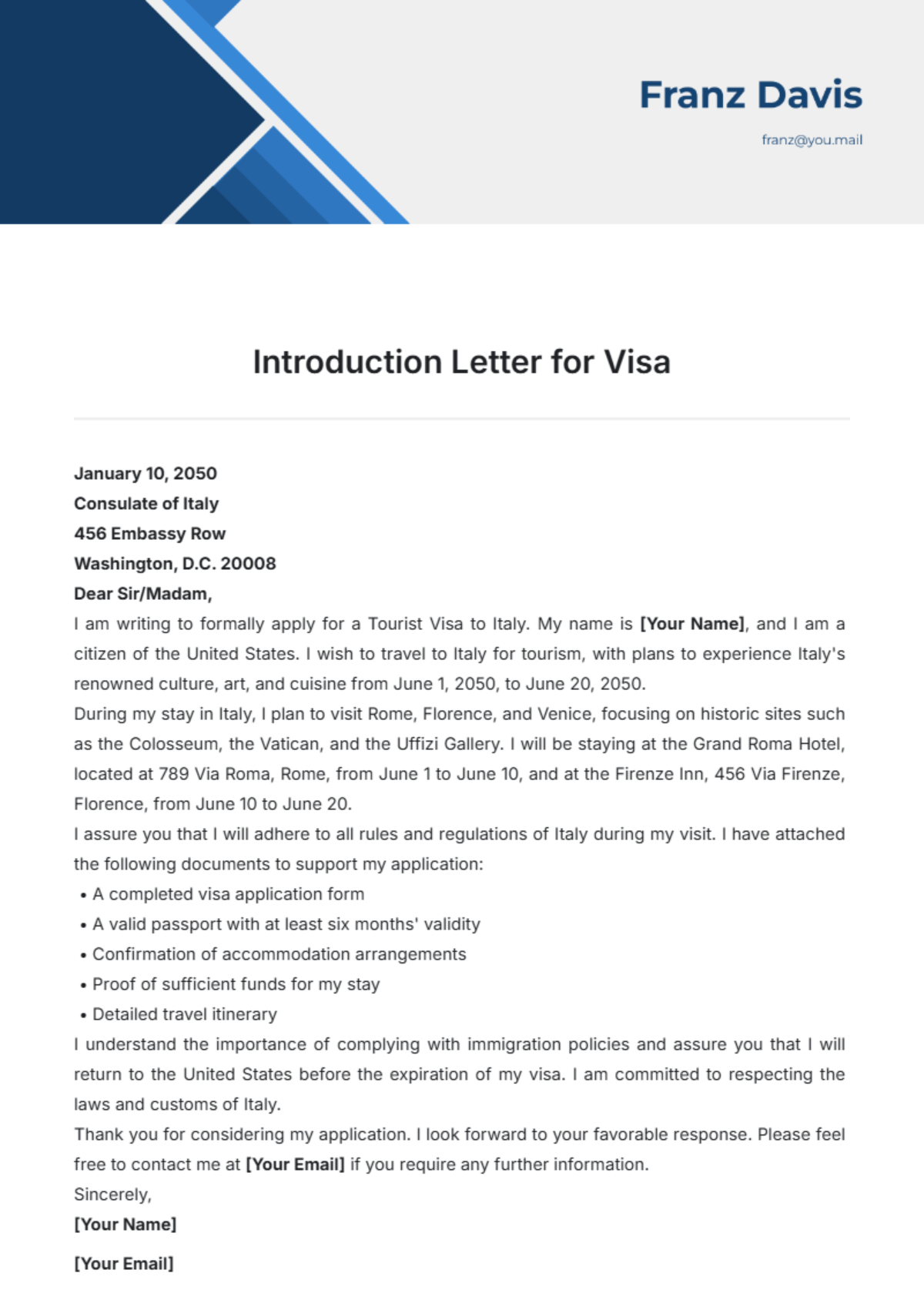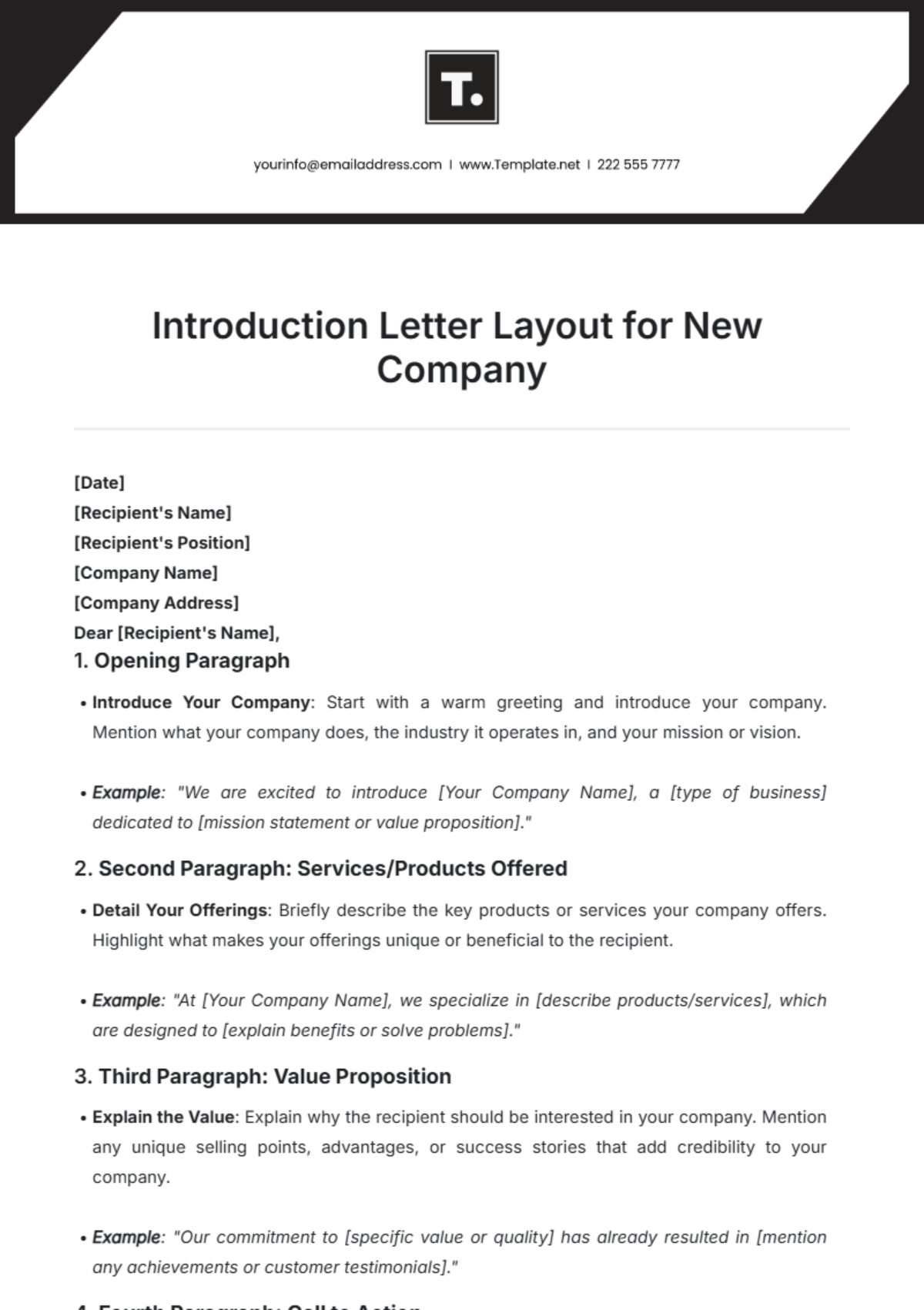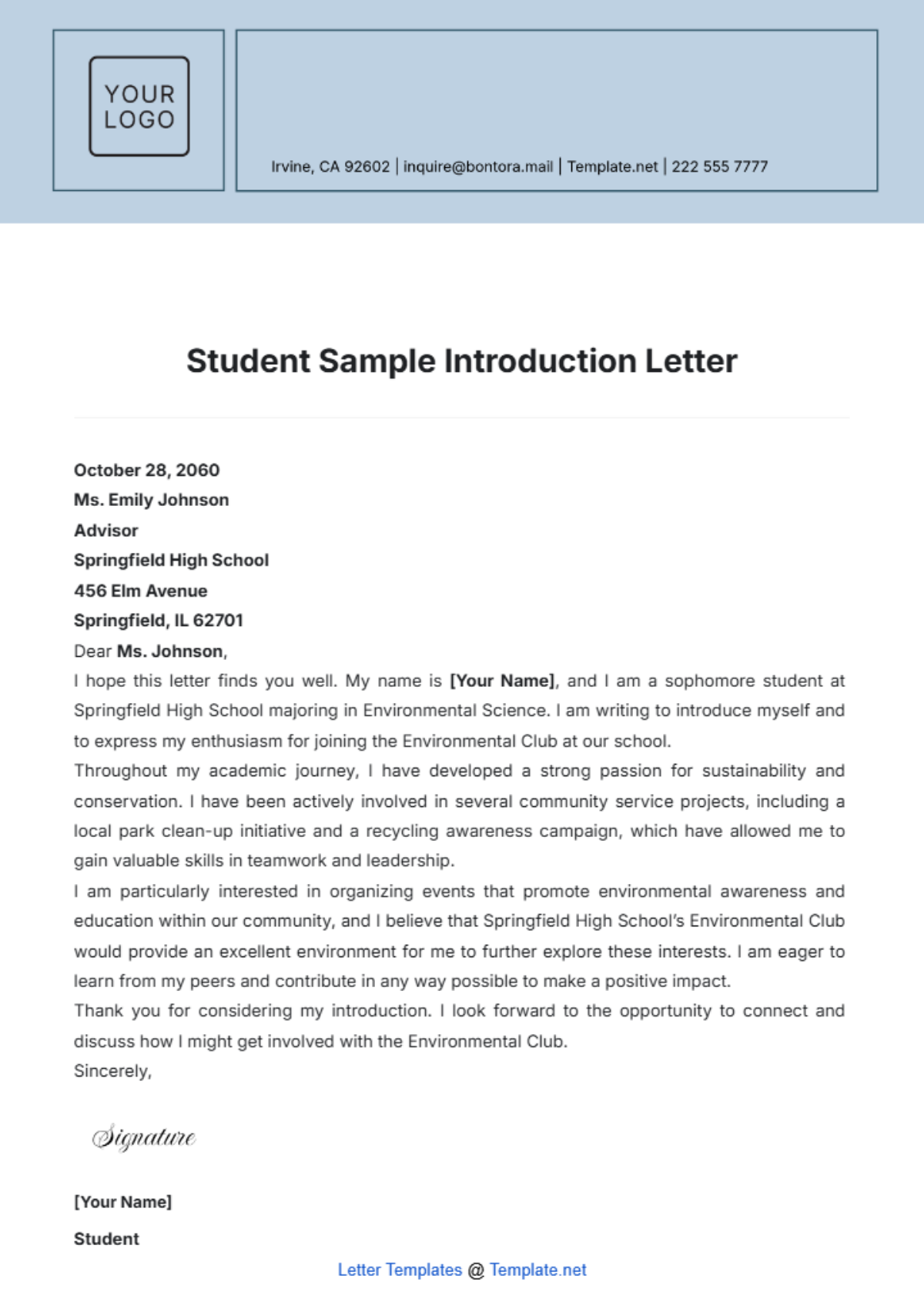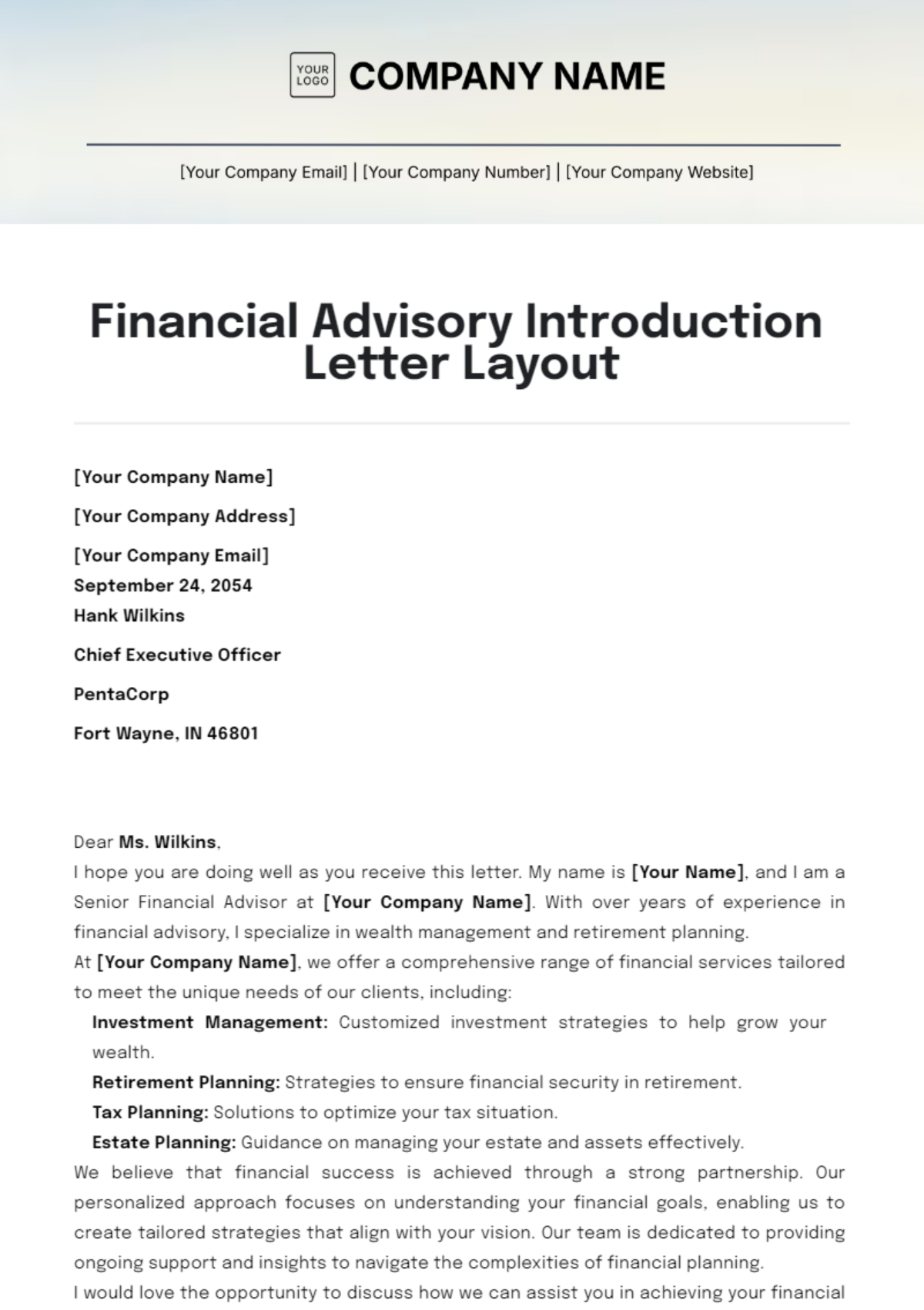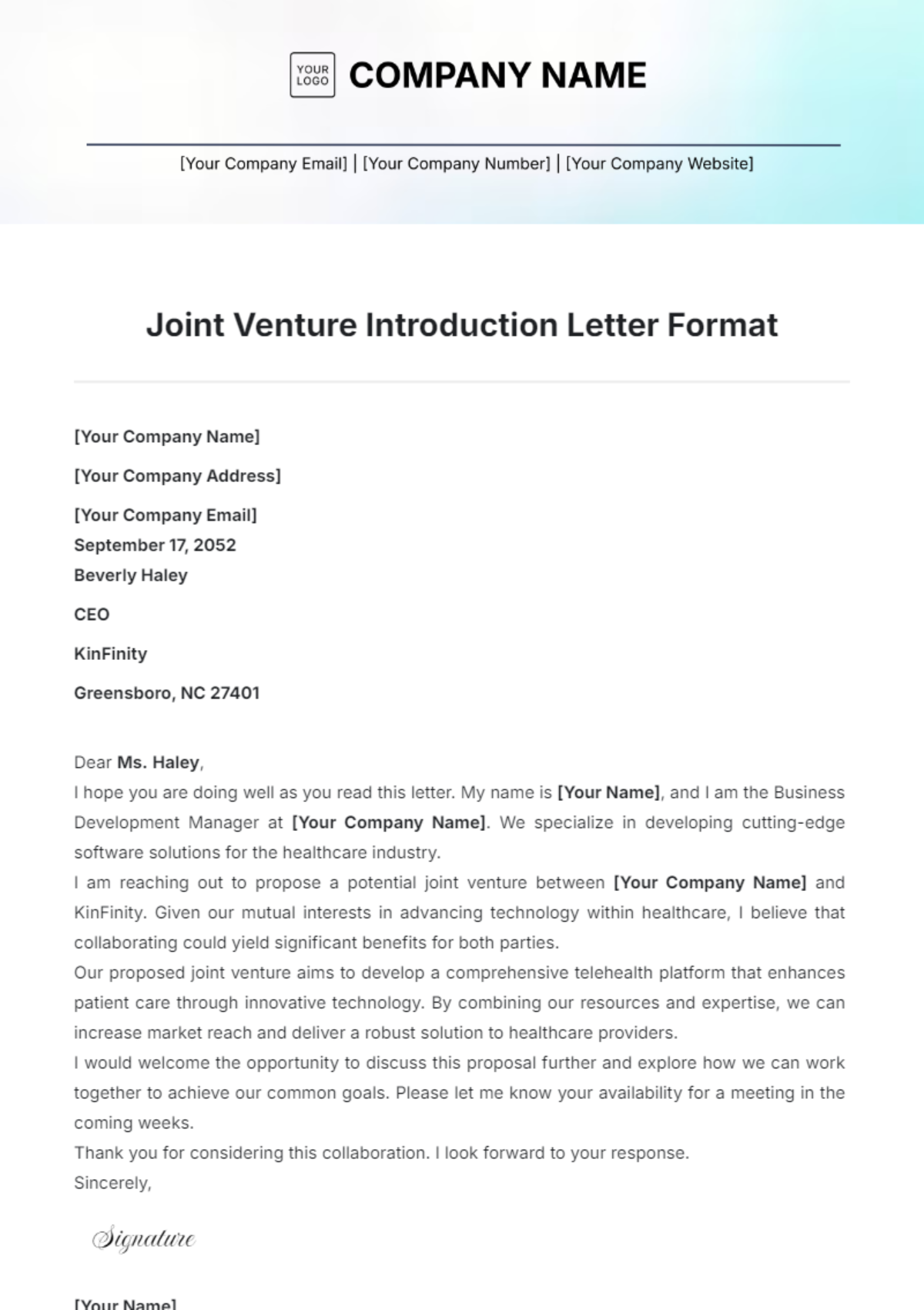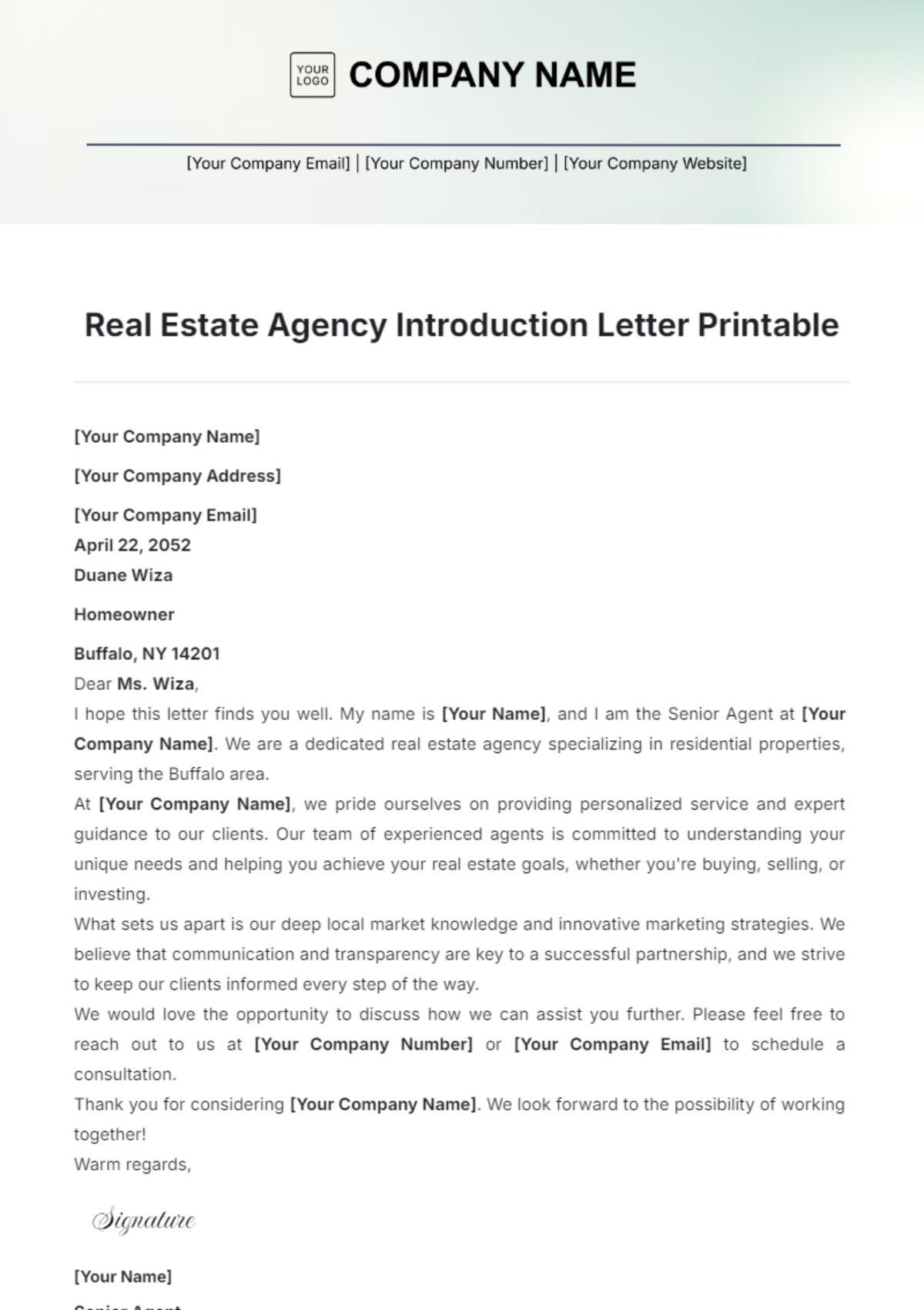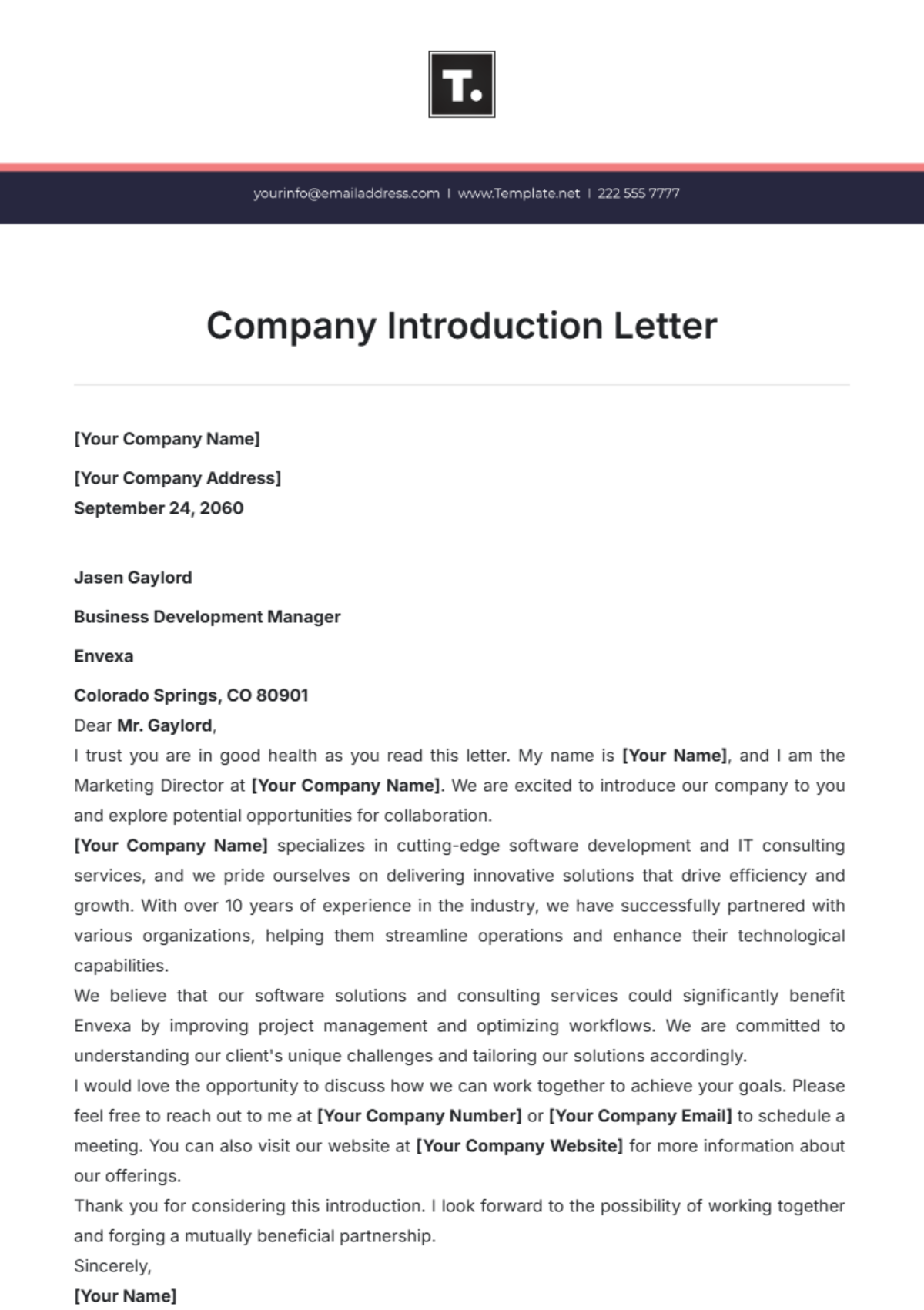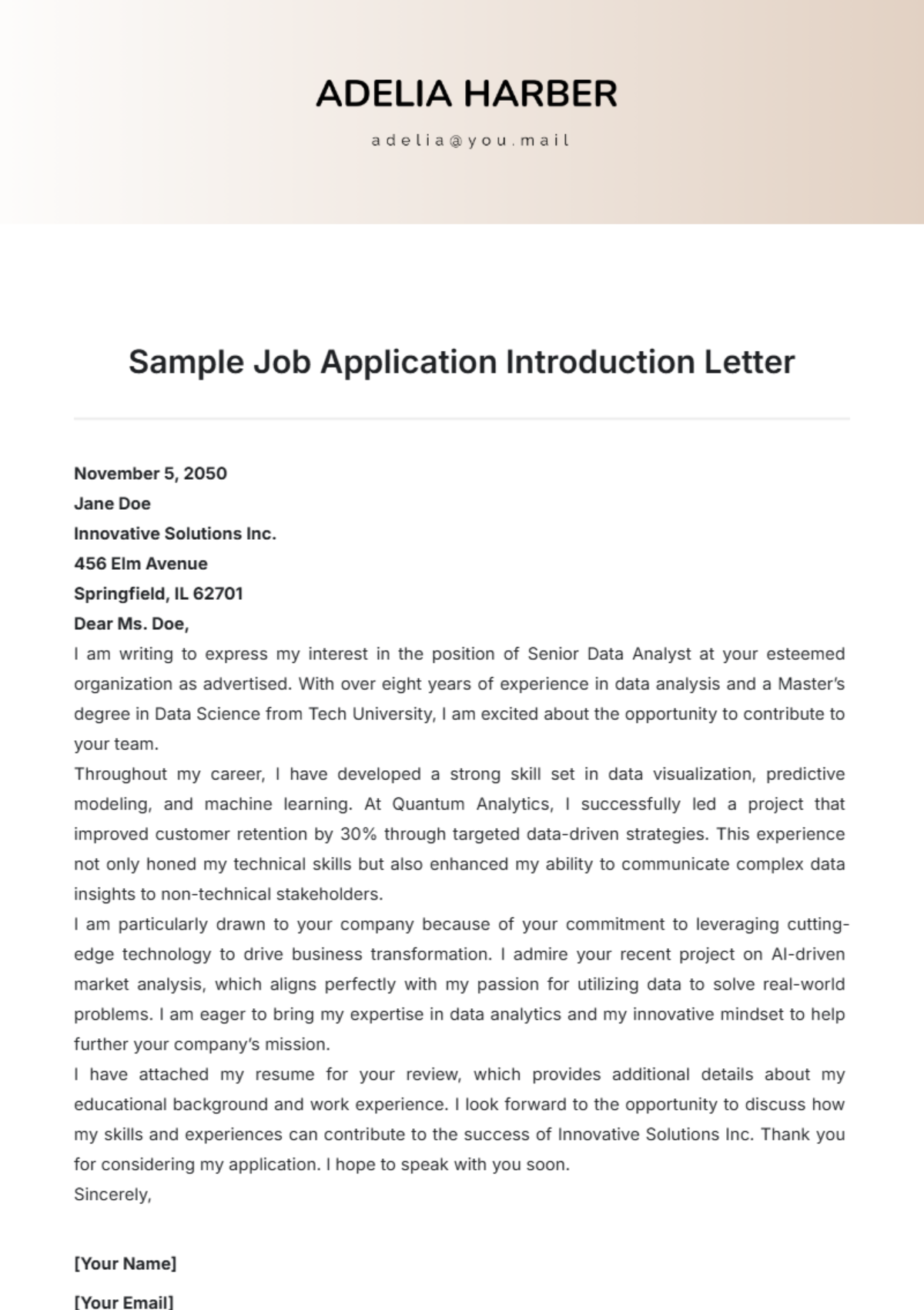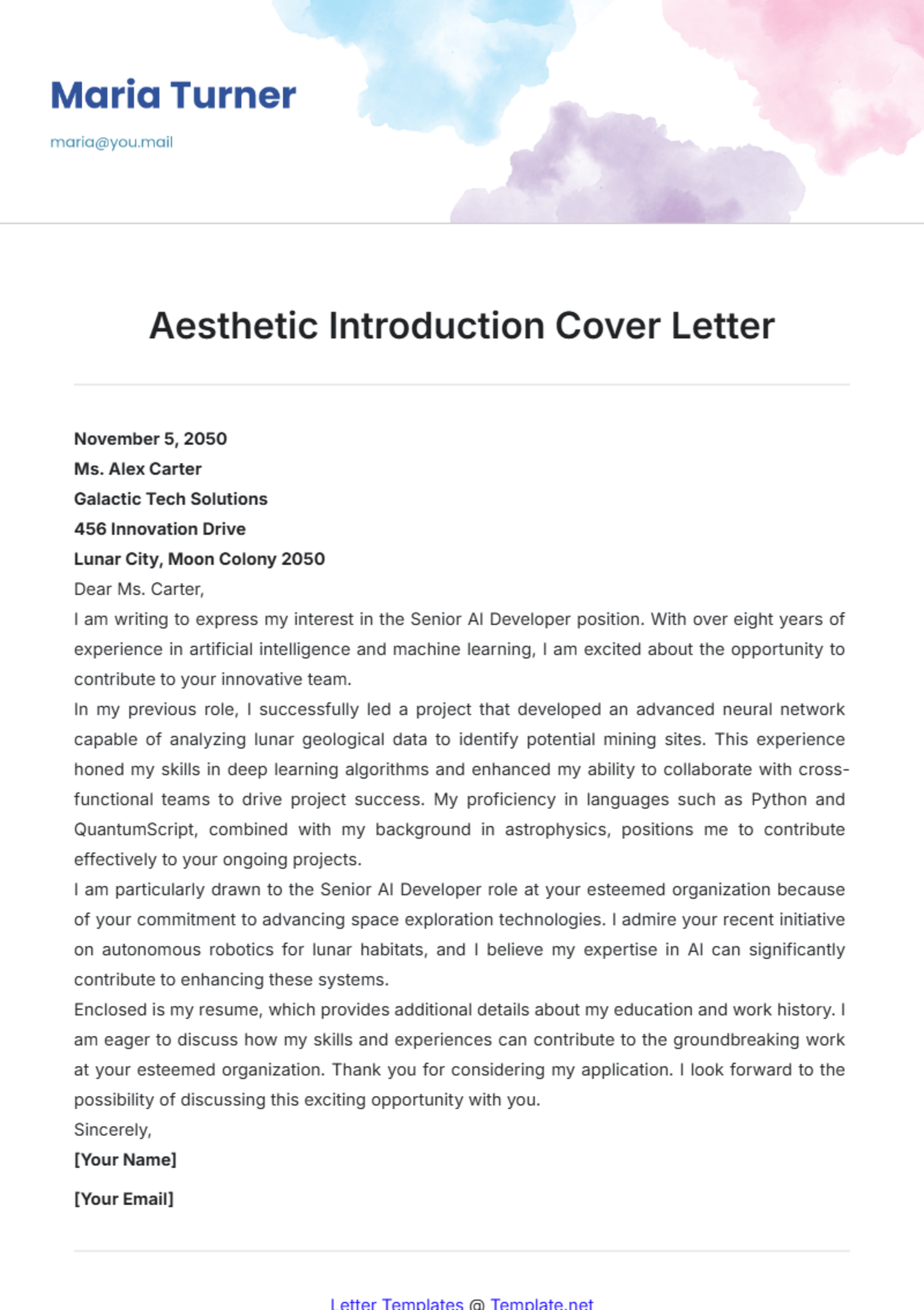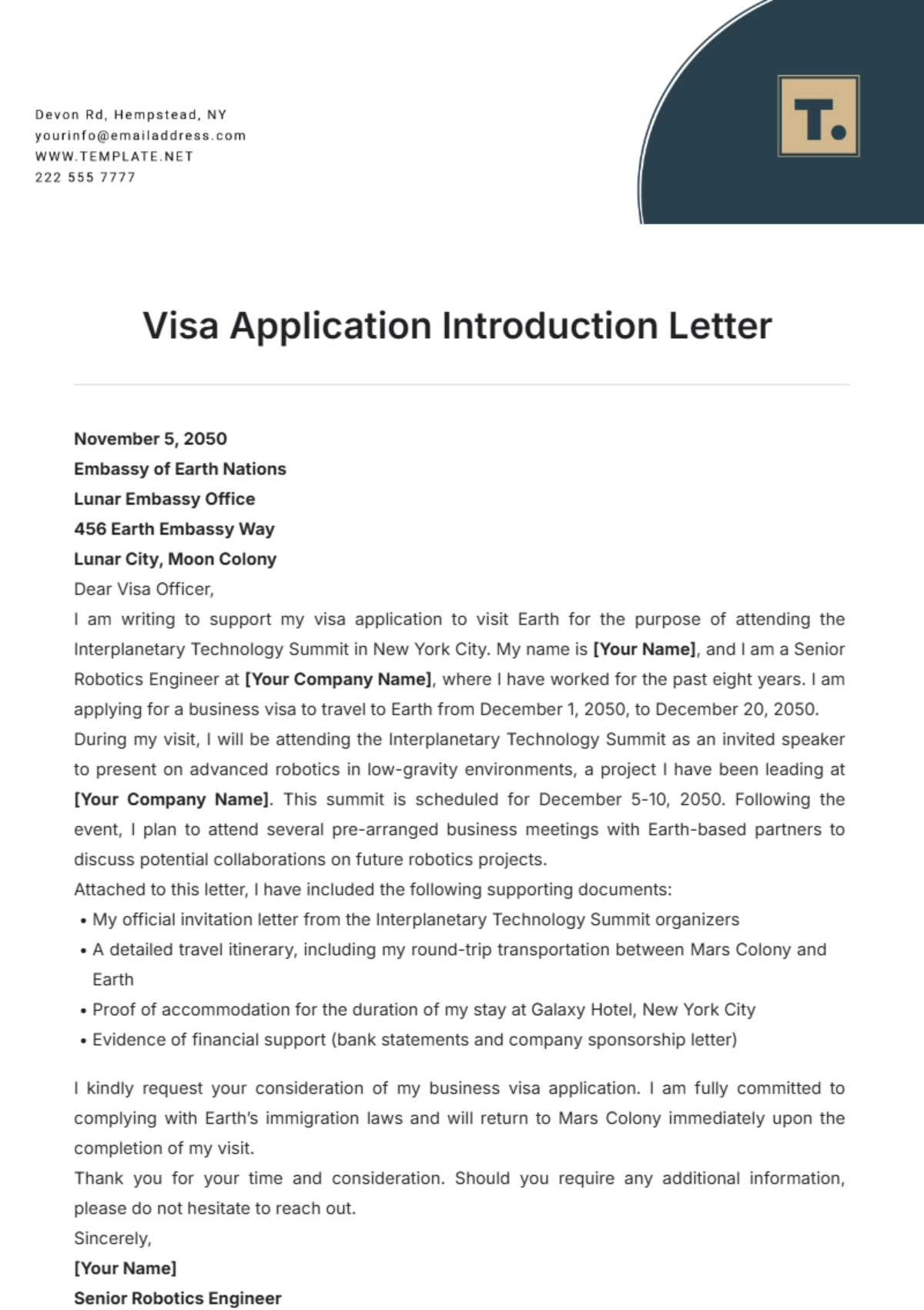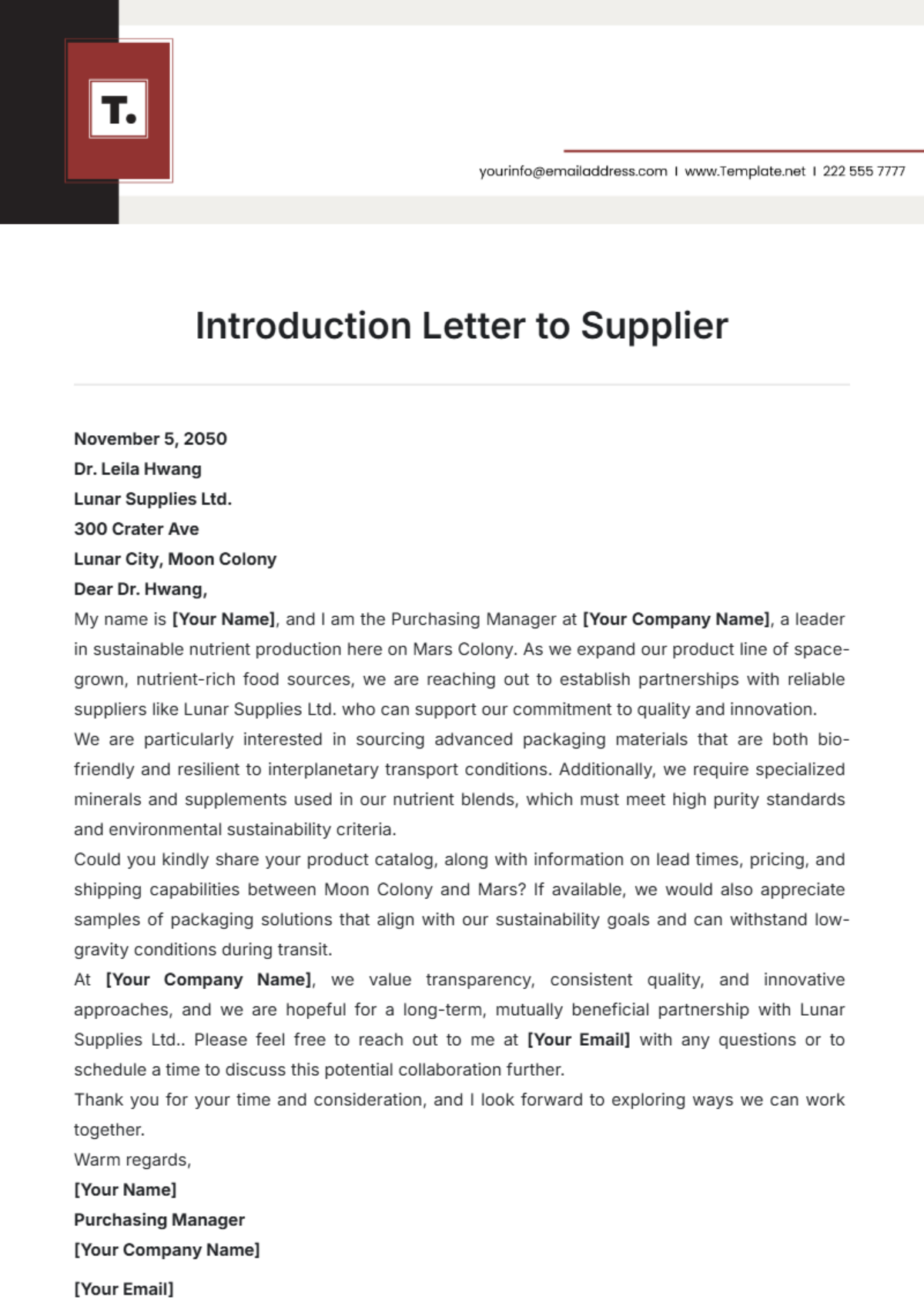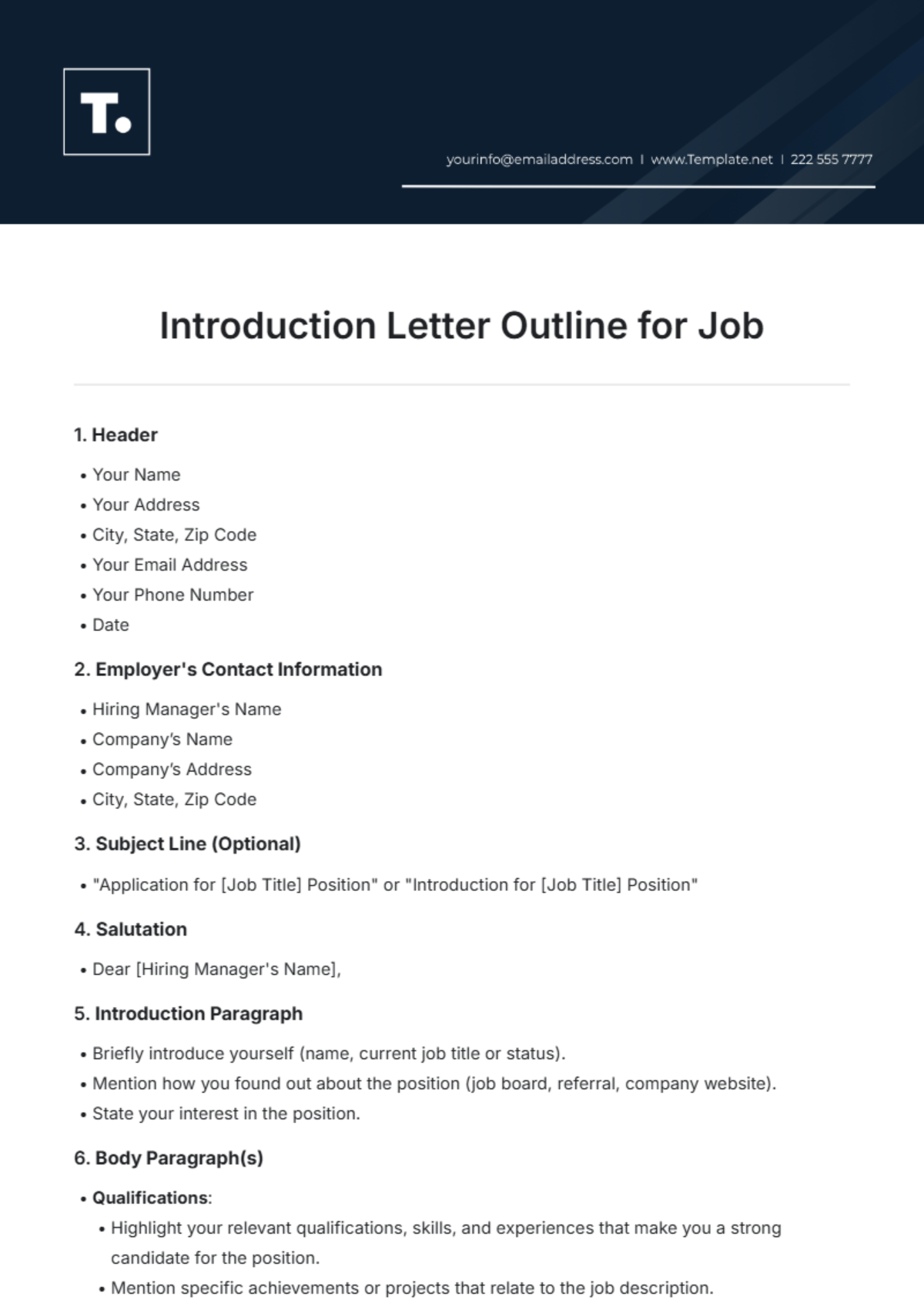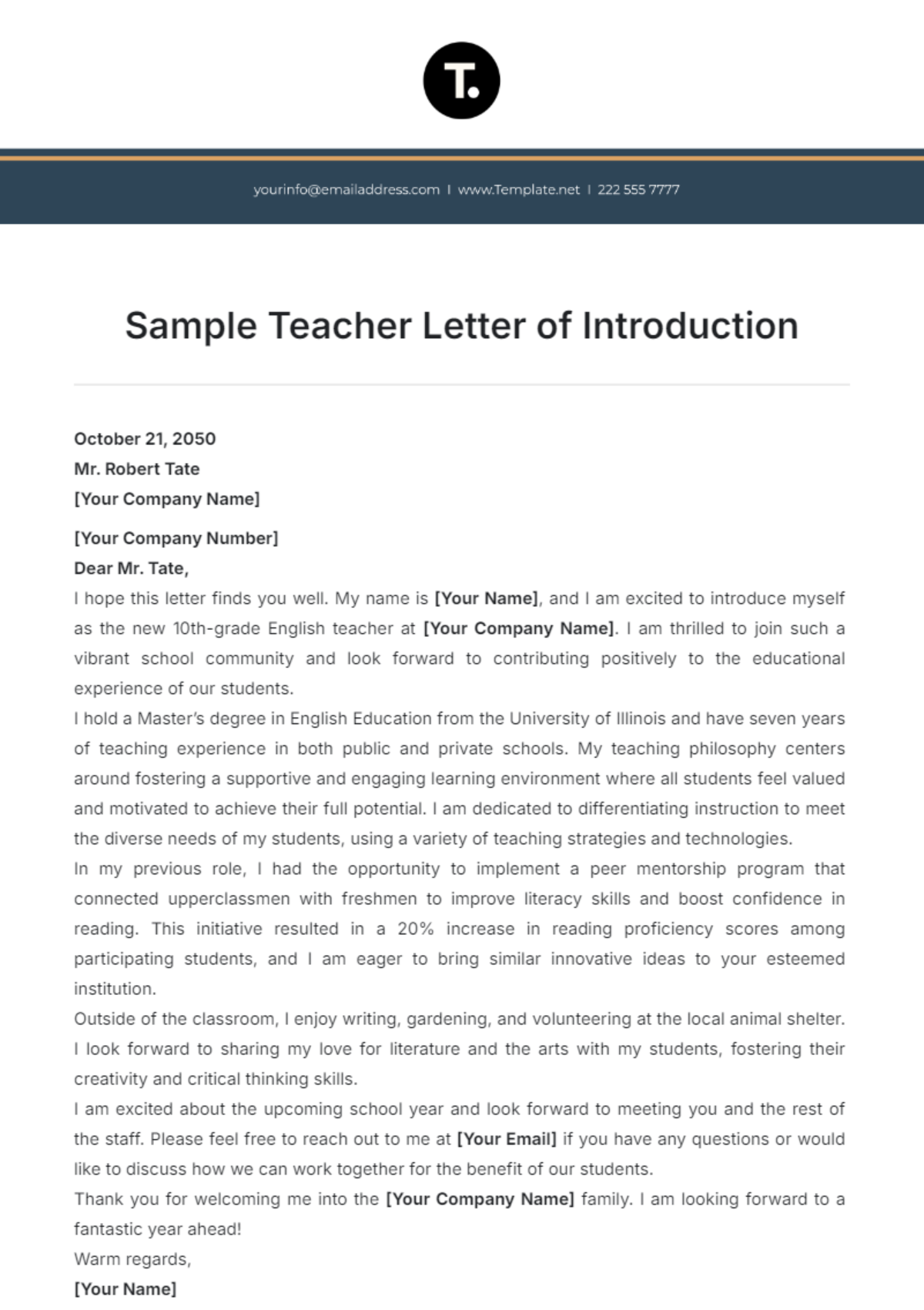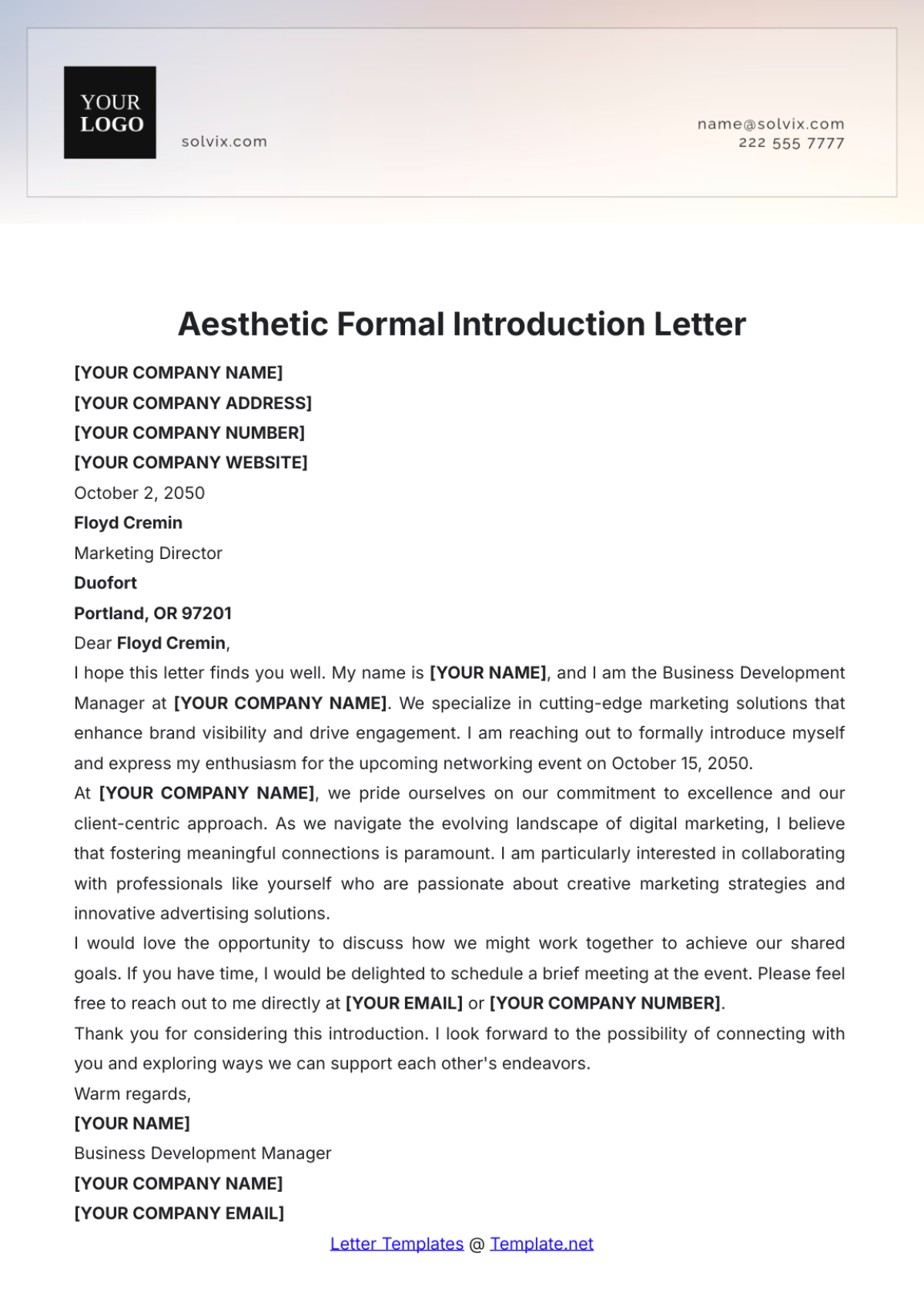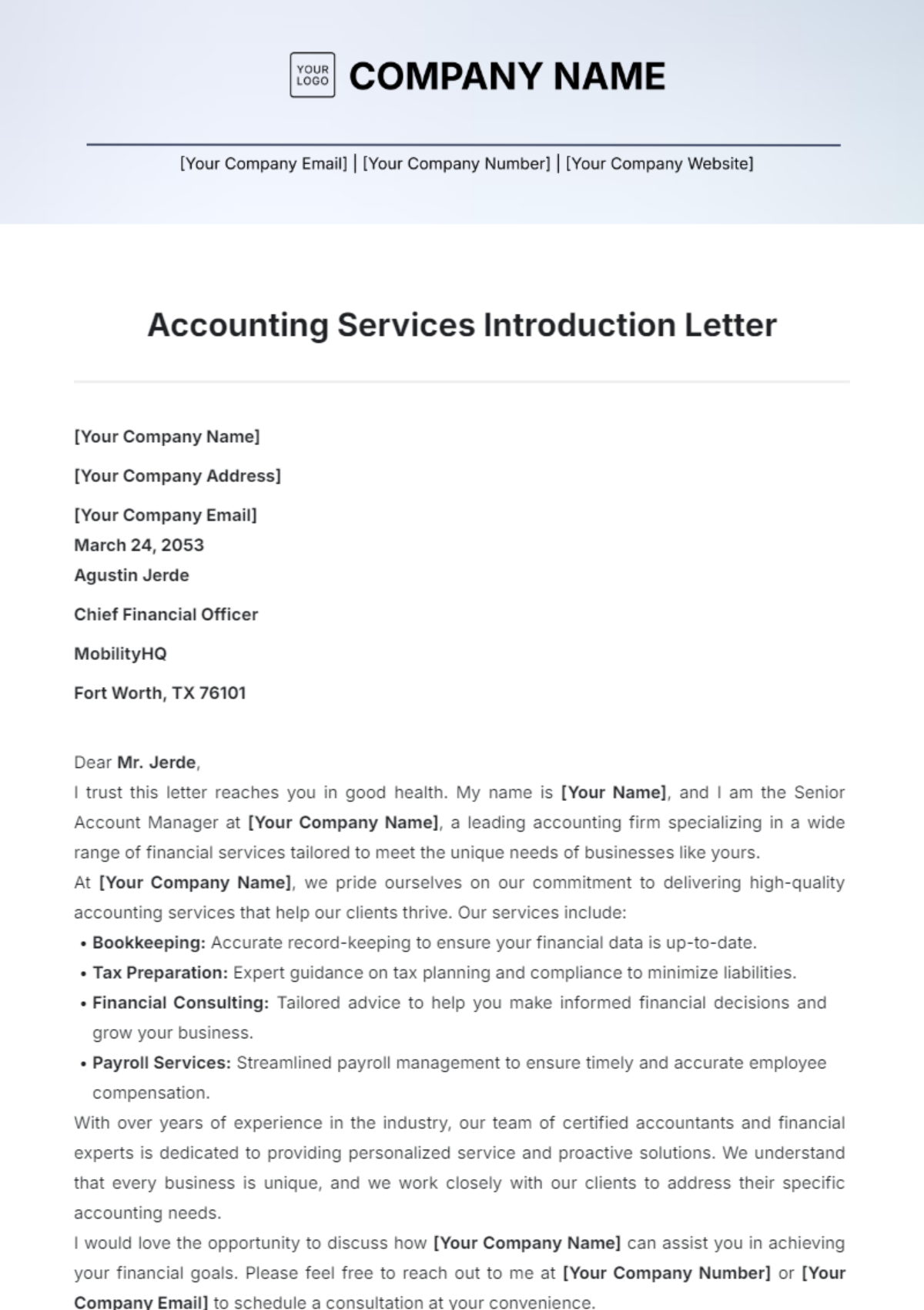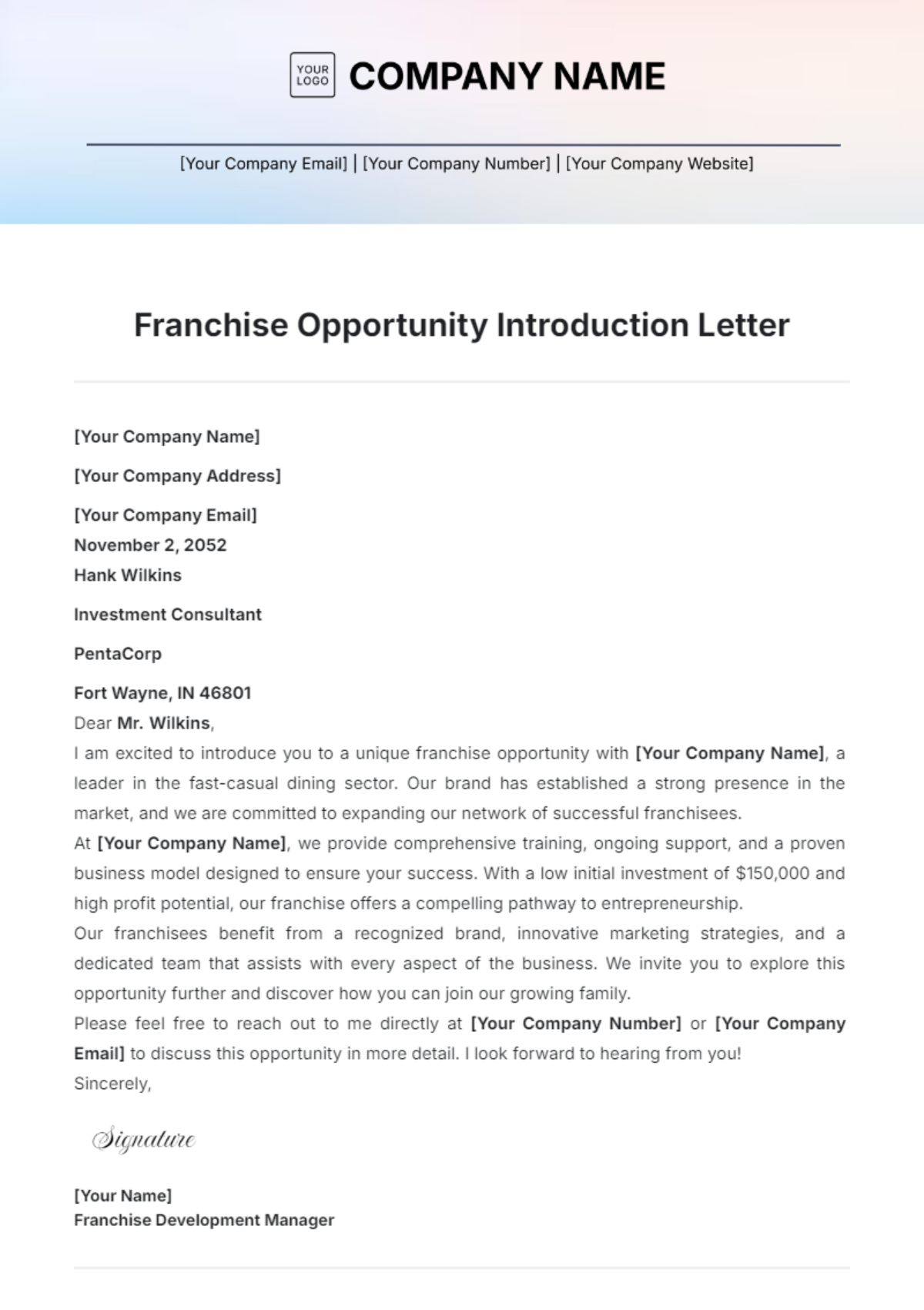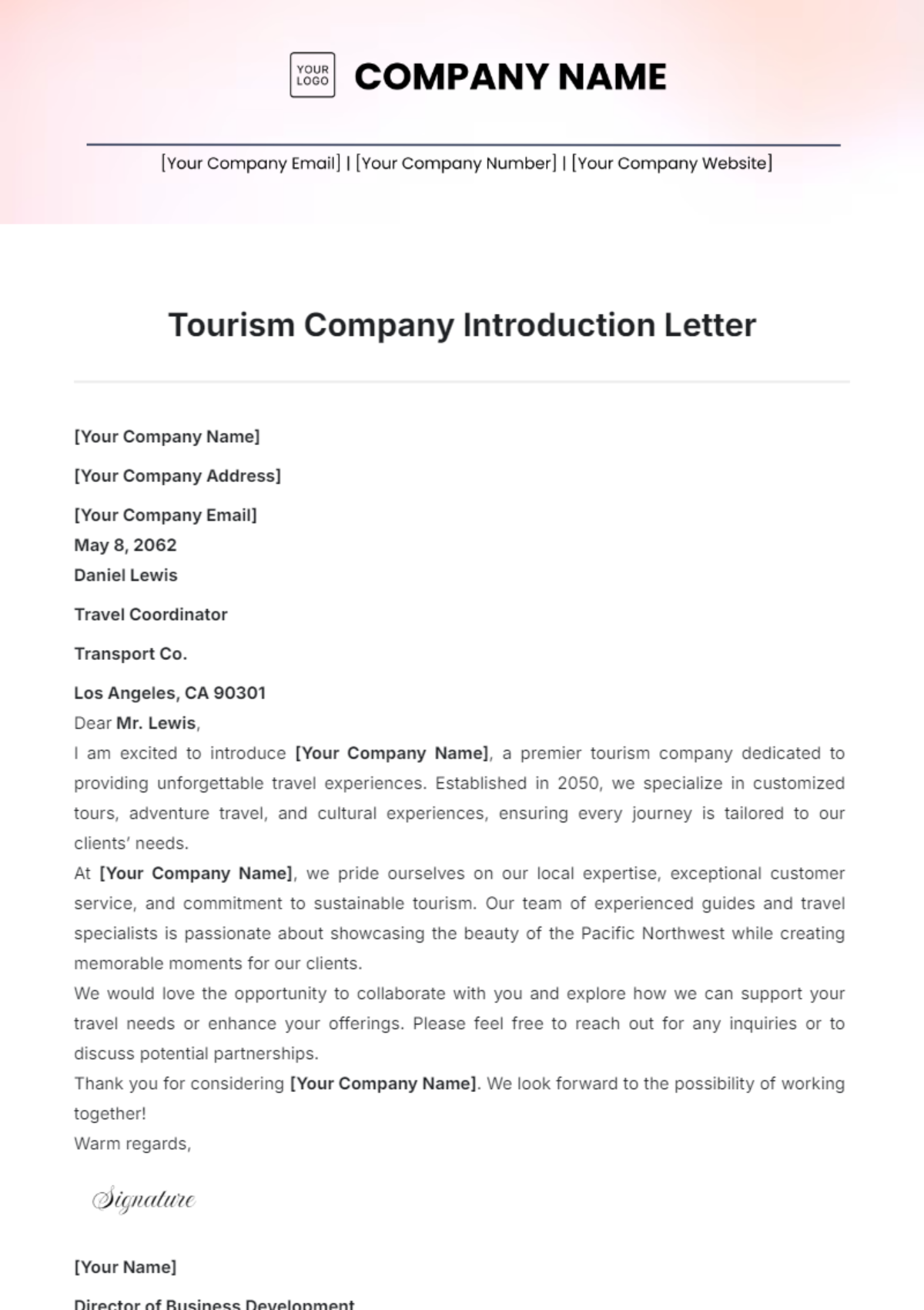Even in a formal setting, first impressions are vital and could determine the success or failure of many important transactions. As such, you need to be able to master the skill of writing solid introductions of yourself and your school or business affiliates. To help you with that, these Introduction Letter Templates are dynamic tools you can use to secure all your student and professional needs. These templates are available in multiple file formats like MS Word, Apple Pages, and Google Docs with sample content you can follow as your guide. Start making impressive letters, and download one now!
How to Make an Introduction Letter?
Many clients and instructors evaluate a person’s character and credentials by the quality of how they are introduced. According to the Harvard Business Review, a strong opening goes a long way. To ensure that you kickstart your job application by providing your potential employers with the motivation to view the rest of your portfolio, you need a good introduction letter. Below are a few tips to help you get started.
1. Make Sure All Elements Are Present
Whether the document is personal, such as for employment or educational purposes, or a company, formal letters share the same basic elements. Check if you’ve placed the letterhead or the correct information of the recipient. It’s always best to have these technical aspects accomplished before you go into the content of the letter.
2. Create An Outline
One great way to make sure that you do not forget any important details is to create an outline. List down the order of the information you need to include, including achievements and notations. That way, you can visualize how the entire letter will look like. An outline or a simple letter will also help you move and reorder details without revising the whole document.
3. Stick to the Main Purpose
Since your letter is only an introduction, you do not have to fill it with convoluted information. Determine right away what the objectives of the letter are, and stick to them as you draft your content. If it’s to introduce a recommended associate, provide a summary that will look like an objective report. If the letter is to initiate a discussion of someone’s qualifications, provide the necessary contact details so the recipient can provide feedback.
4. Monitor the Progression of Details
Despite having an outline, you can still lose yourself and veer away from the plan once you start writing the content of the letter. To avoid this, always check and reread your paragraphs as you go along. Not only will you be able to quickly spot typos, but you can also spot logical inconsistencies to the order of the information as they are presented. Reading your sentence aloud also helps spot any errors.
5. Do Not Overcompensate
Most people tend to be overwhelmed when they write an introduction letter. This means that they either use lofty words and complicated terms or repeat the same information over and over again. You need to avoid doing this, as it will most likely be counterproductive. You do not need to exaggerate to present someone’s credentials if they are truly qualified. Treat your introduction letter as you will any business document. Use professional language, and be concise.

